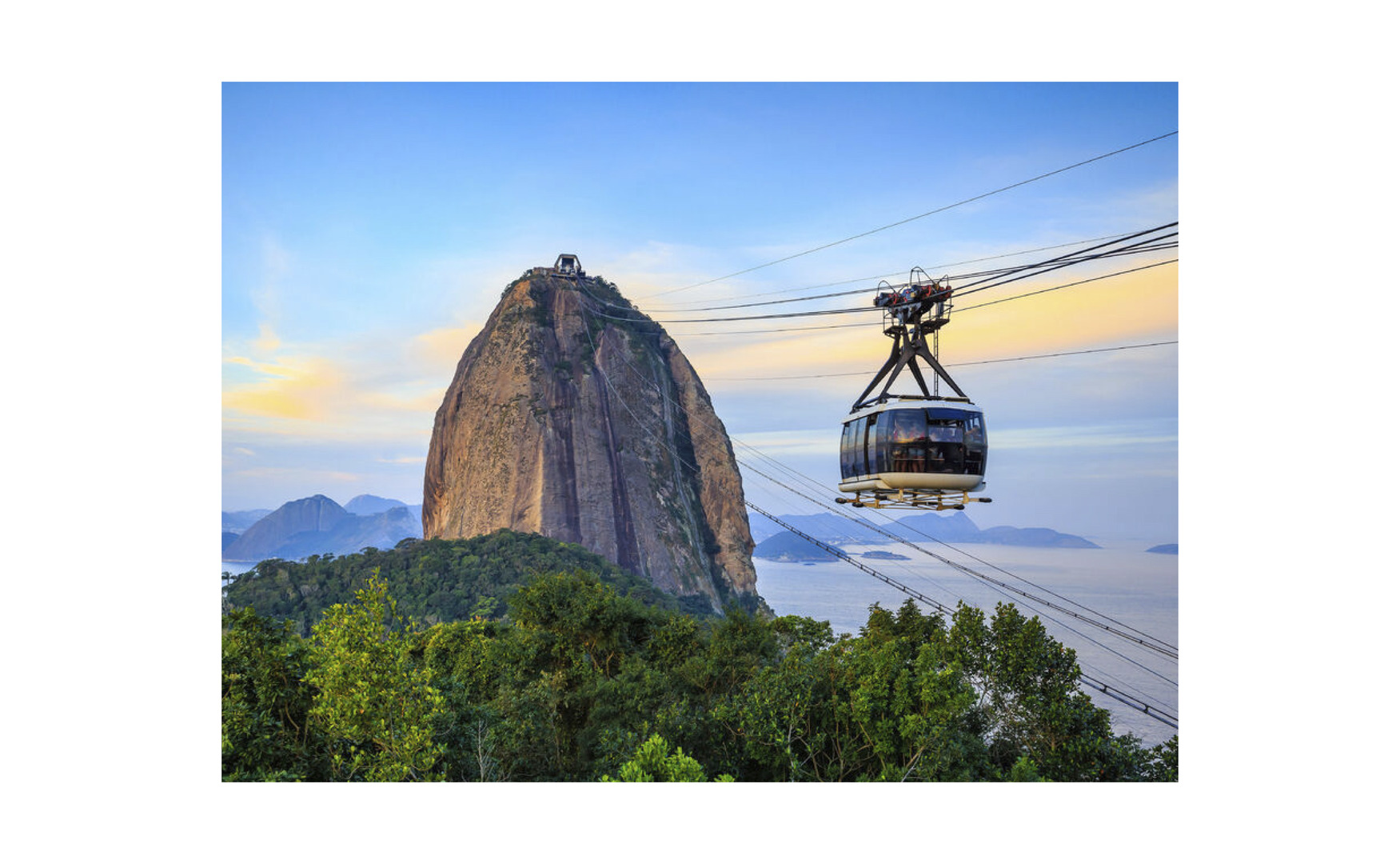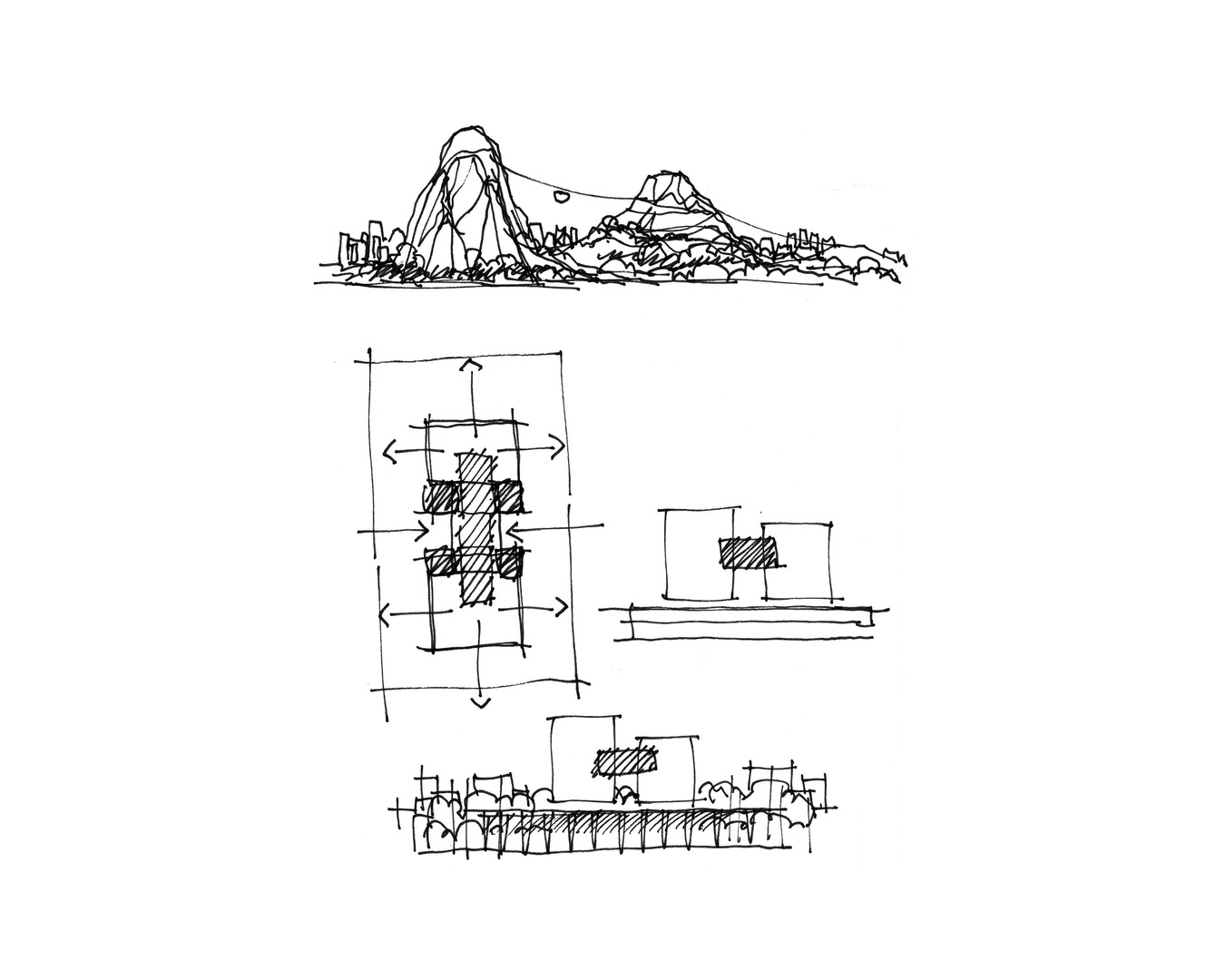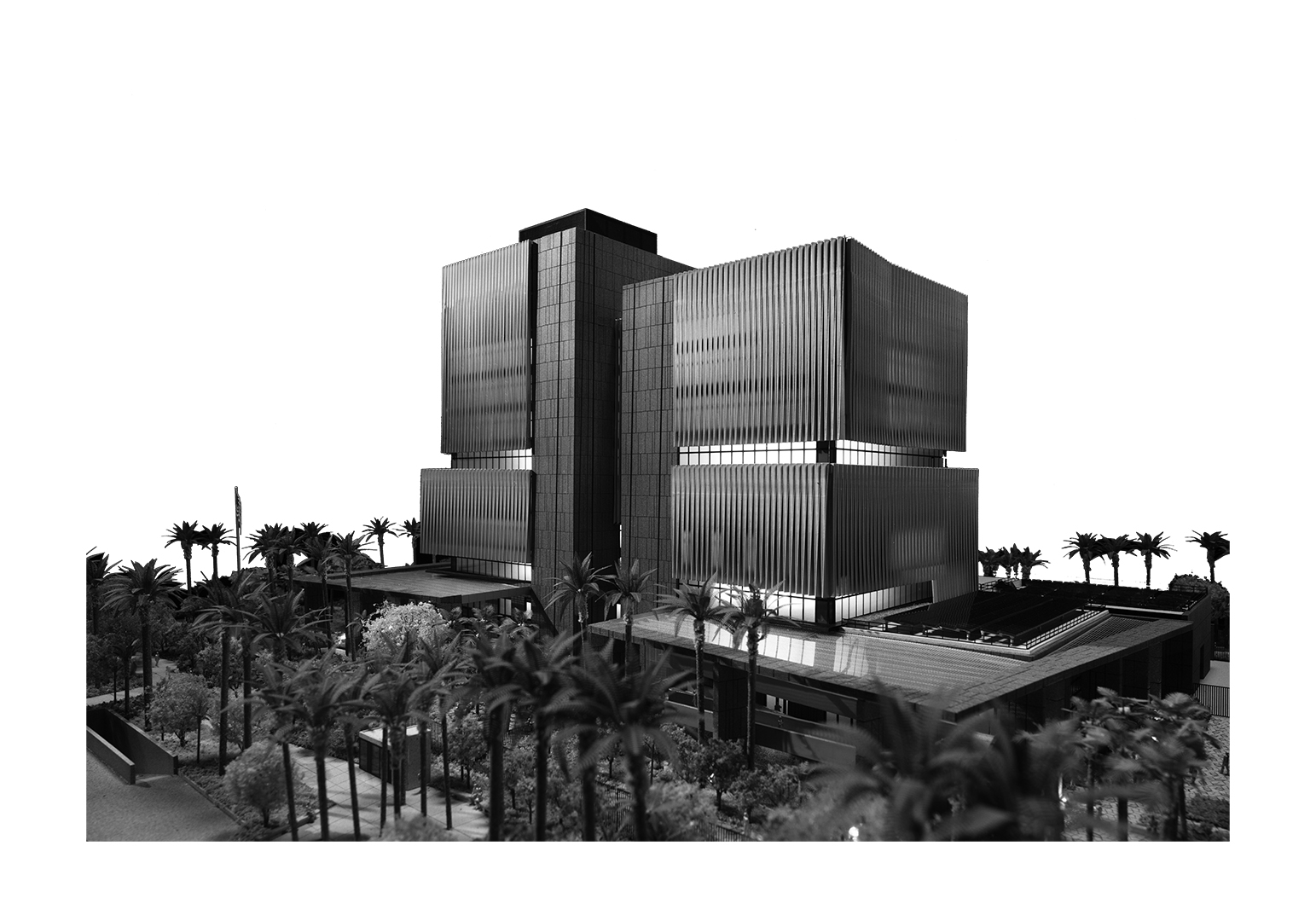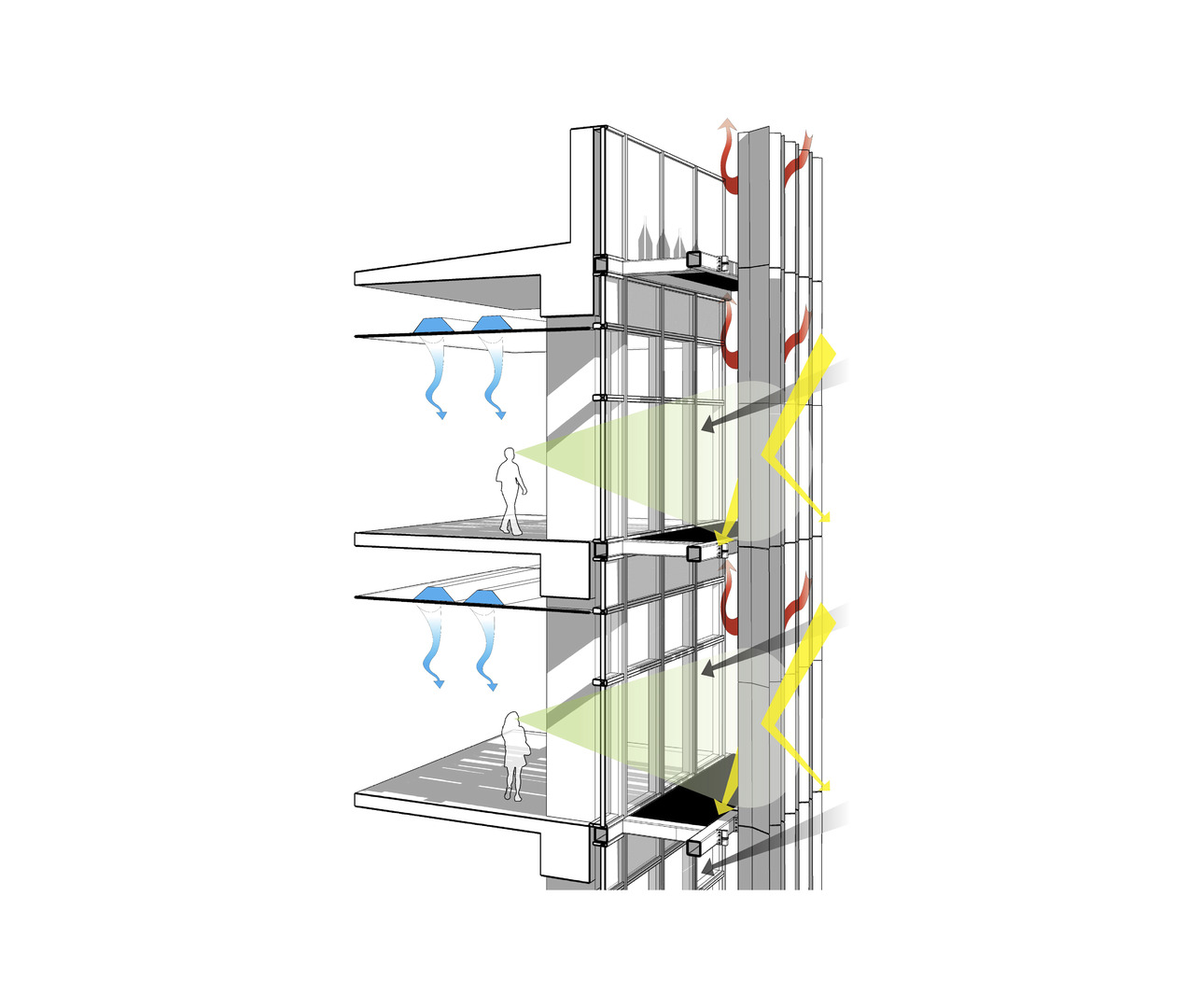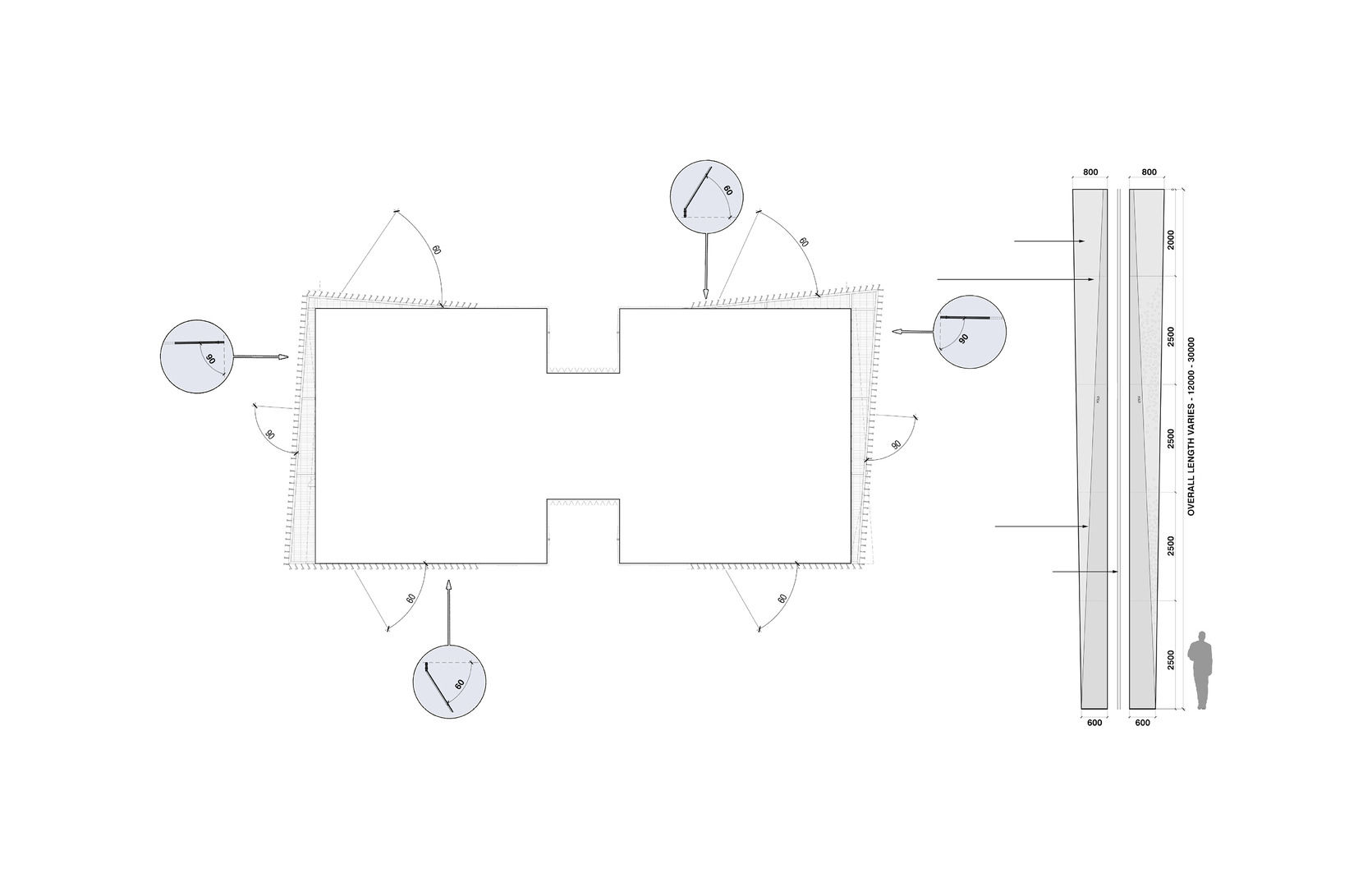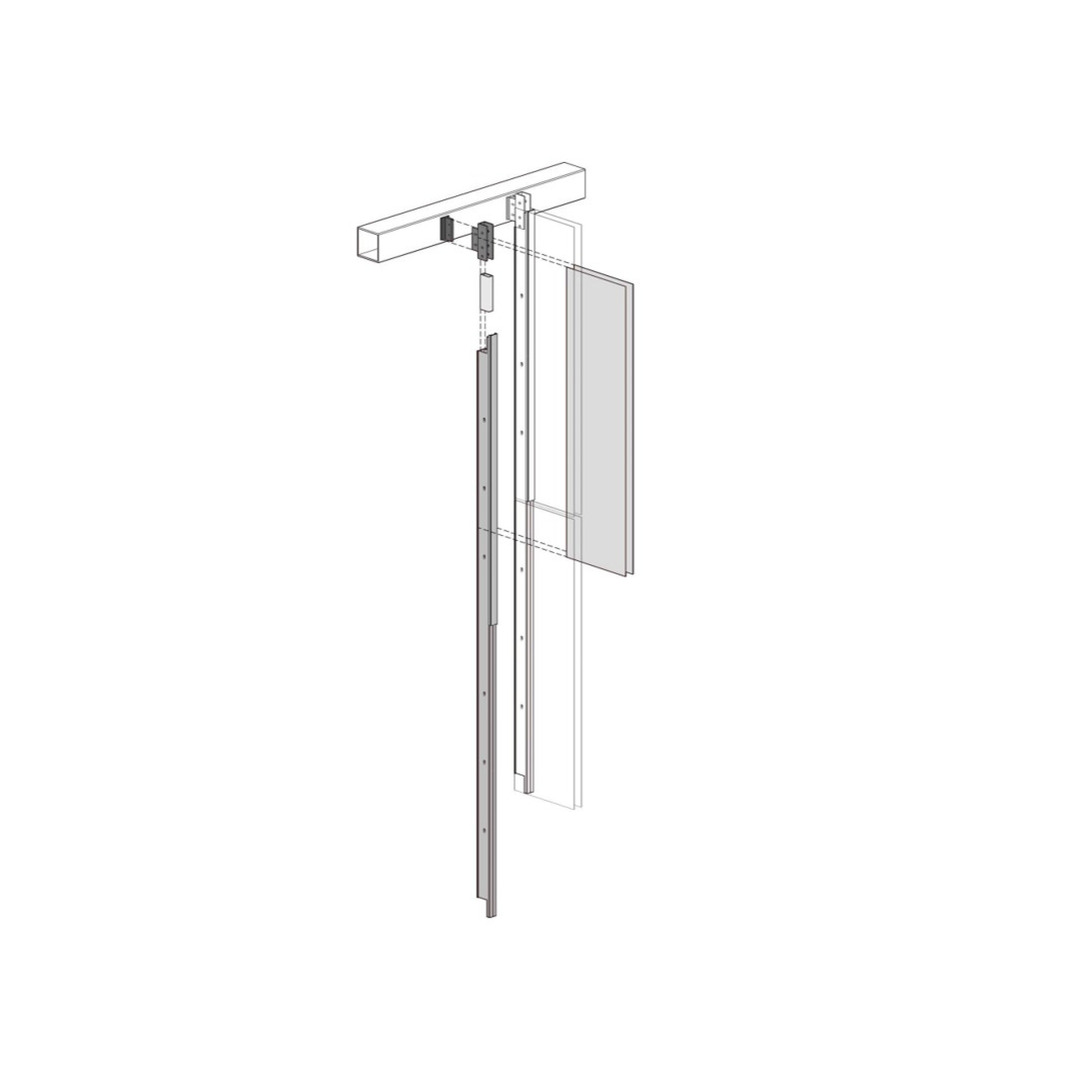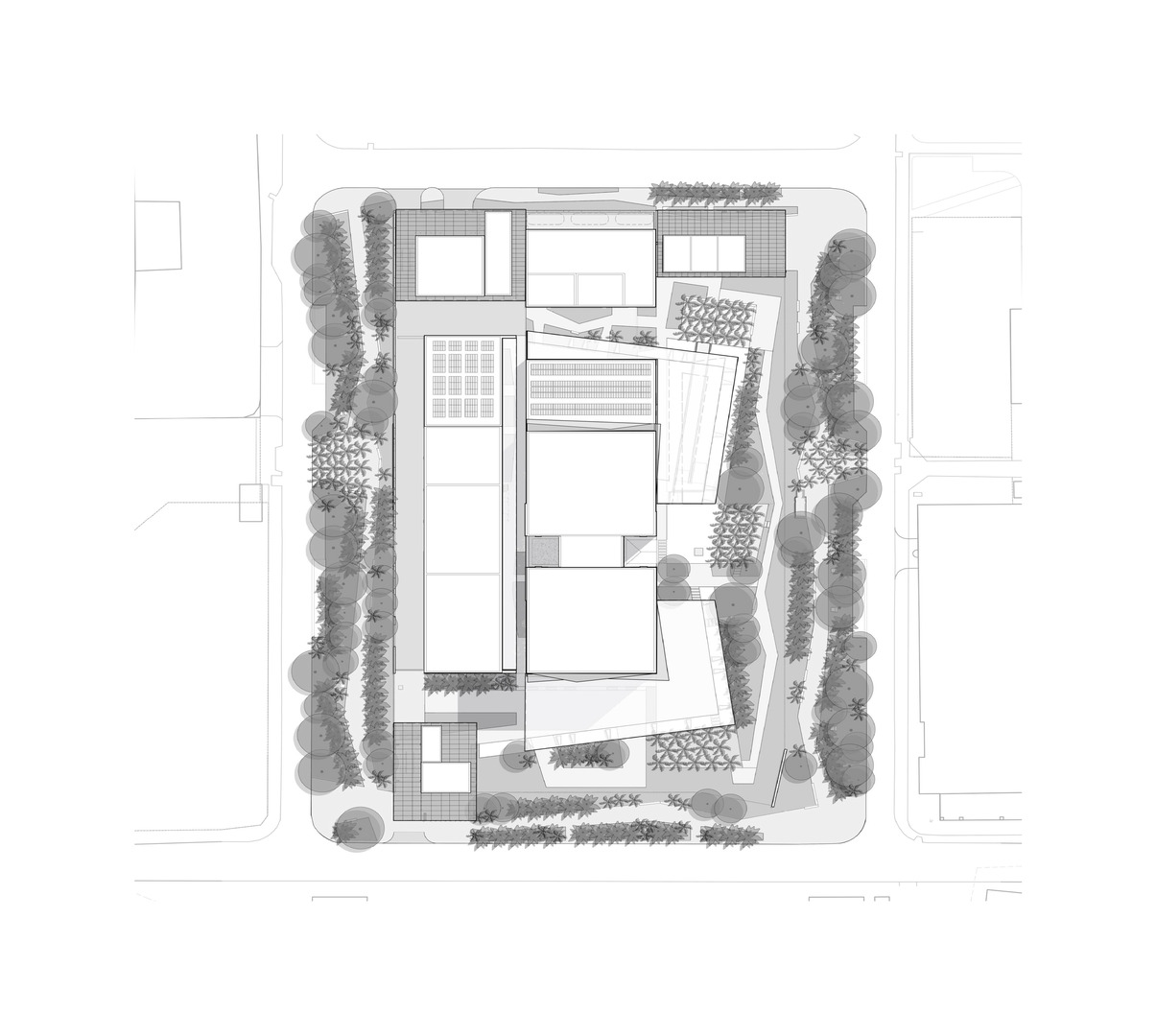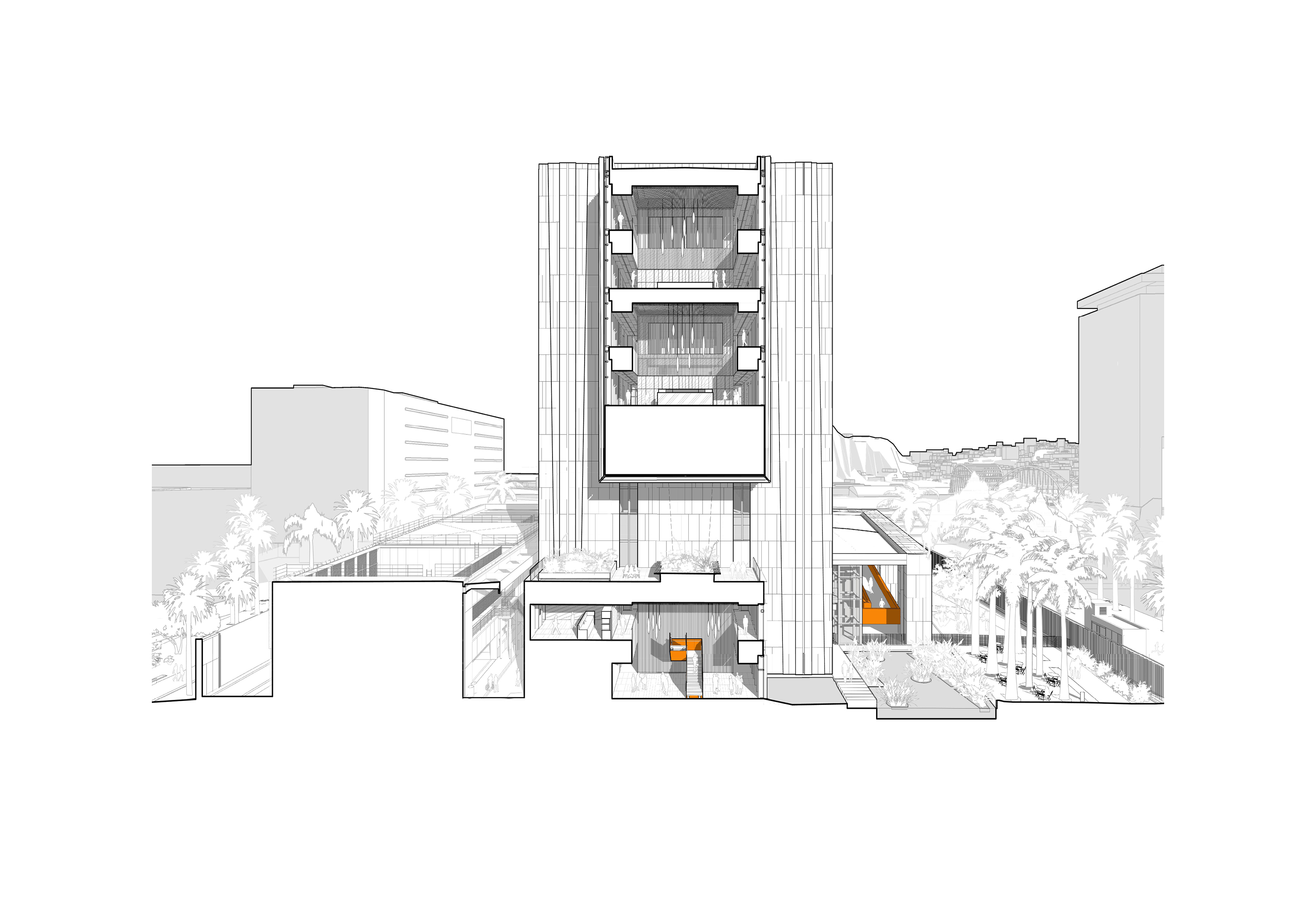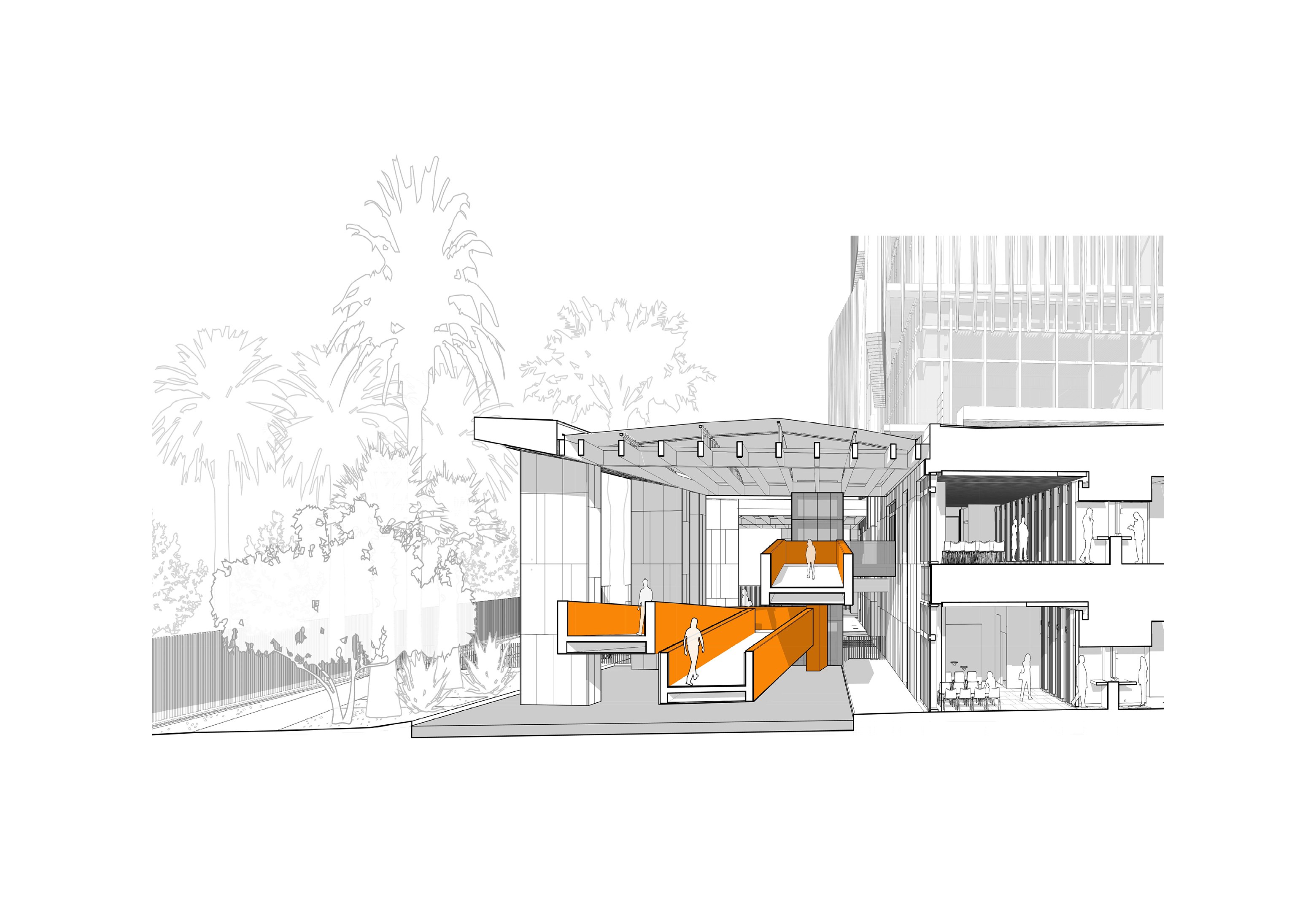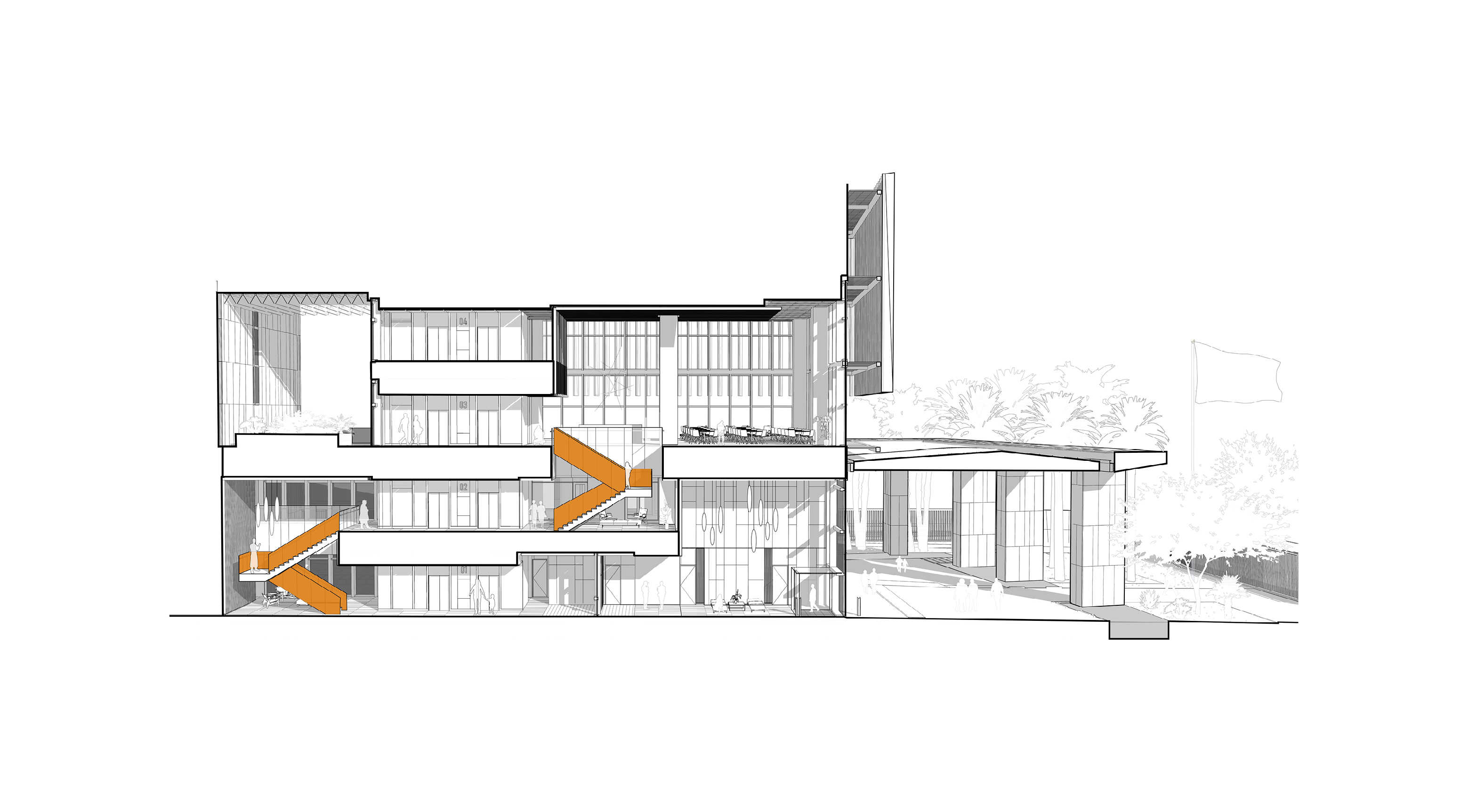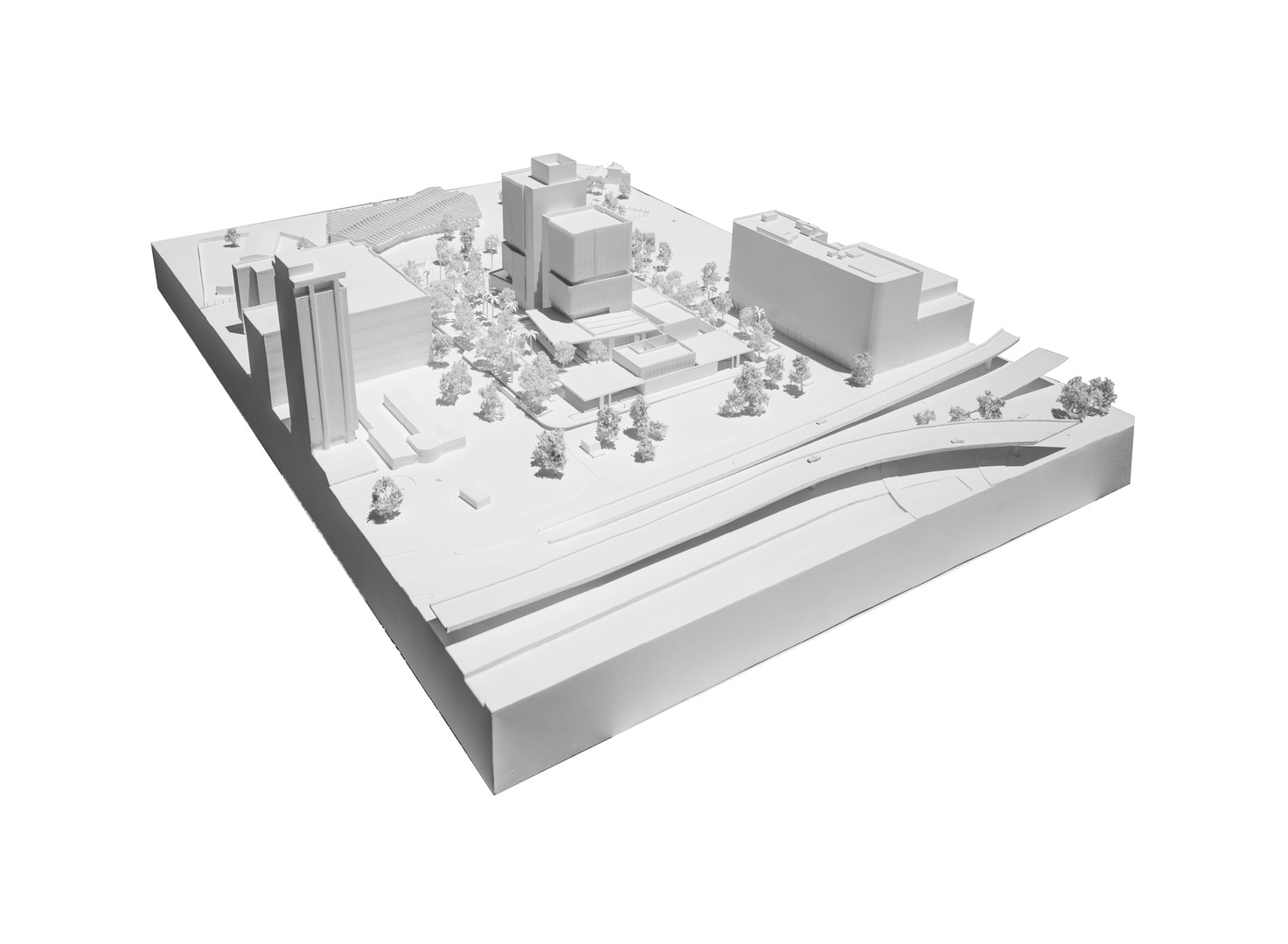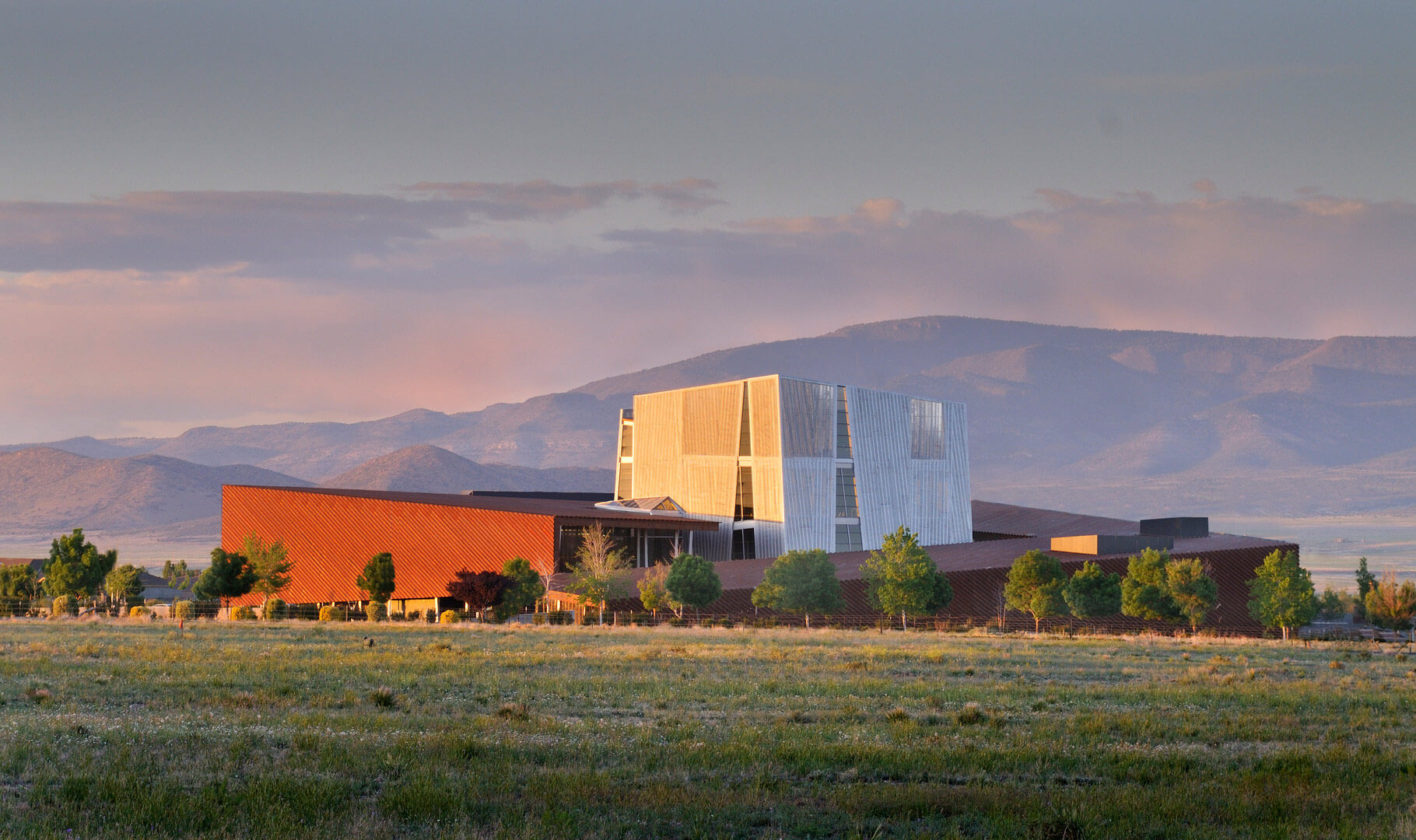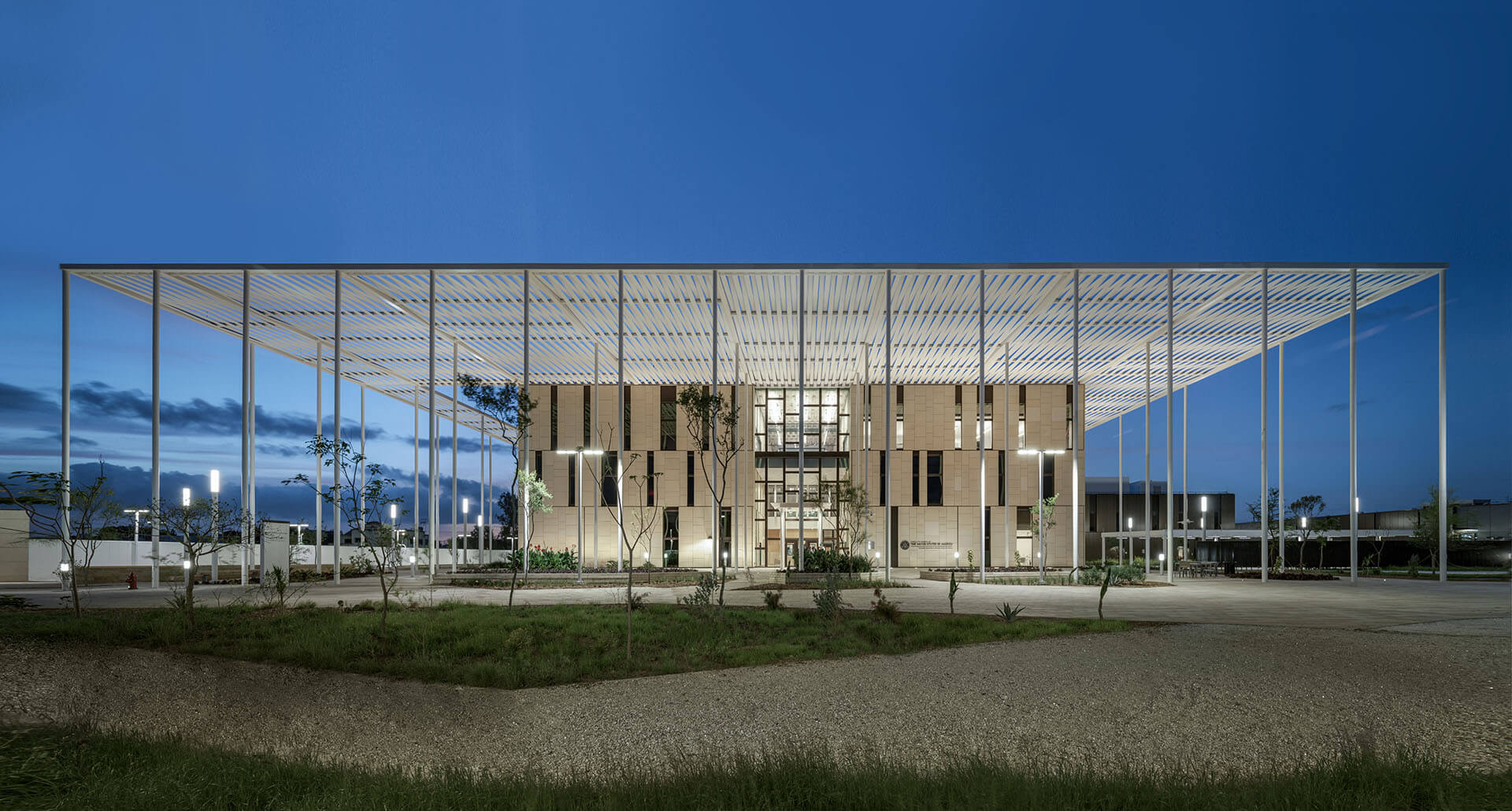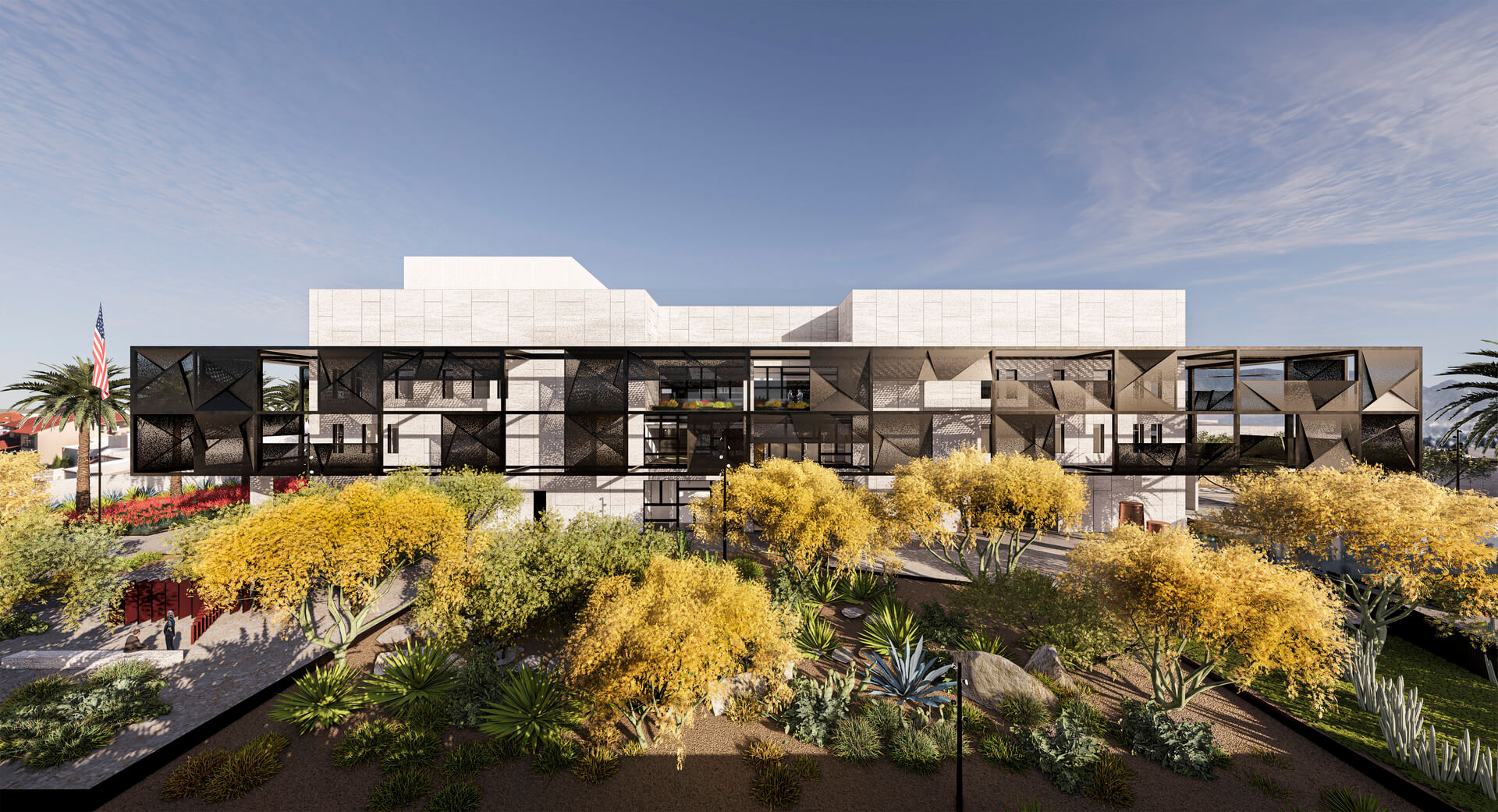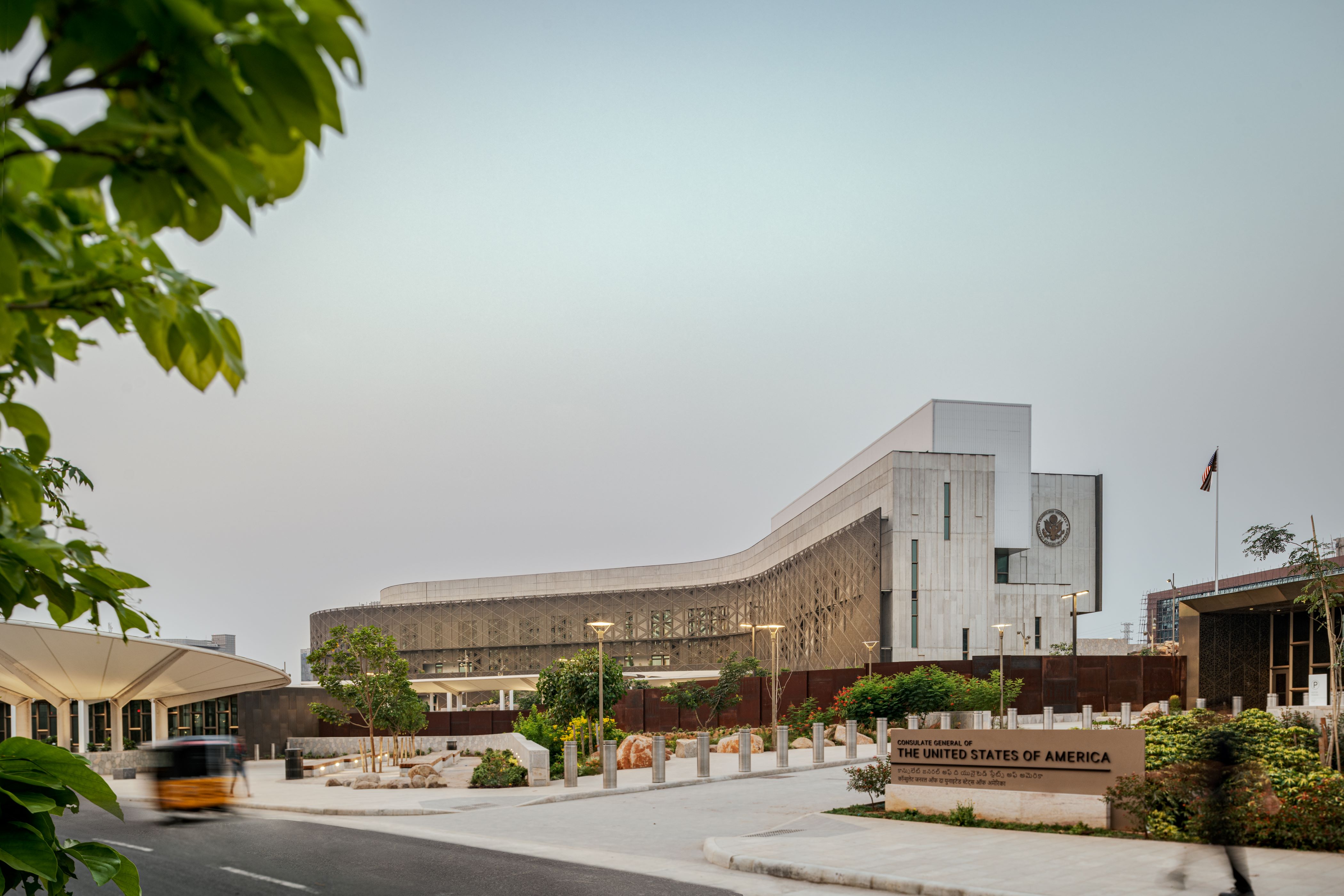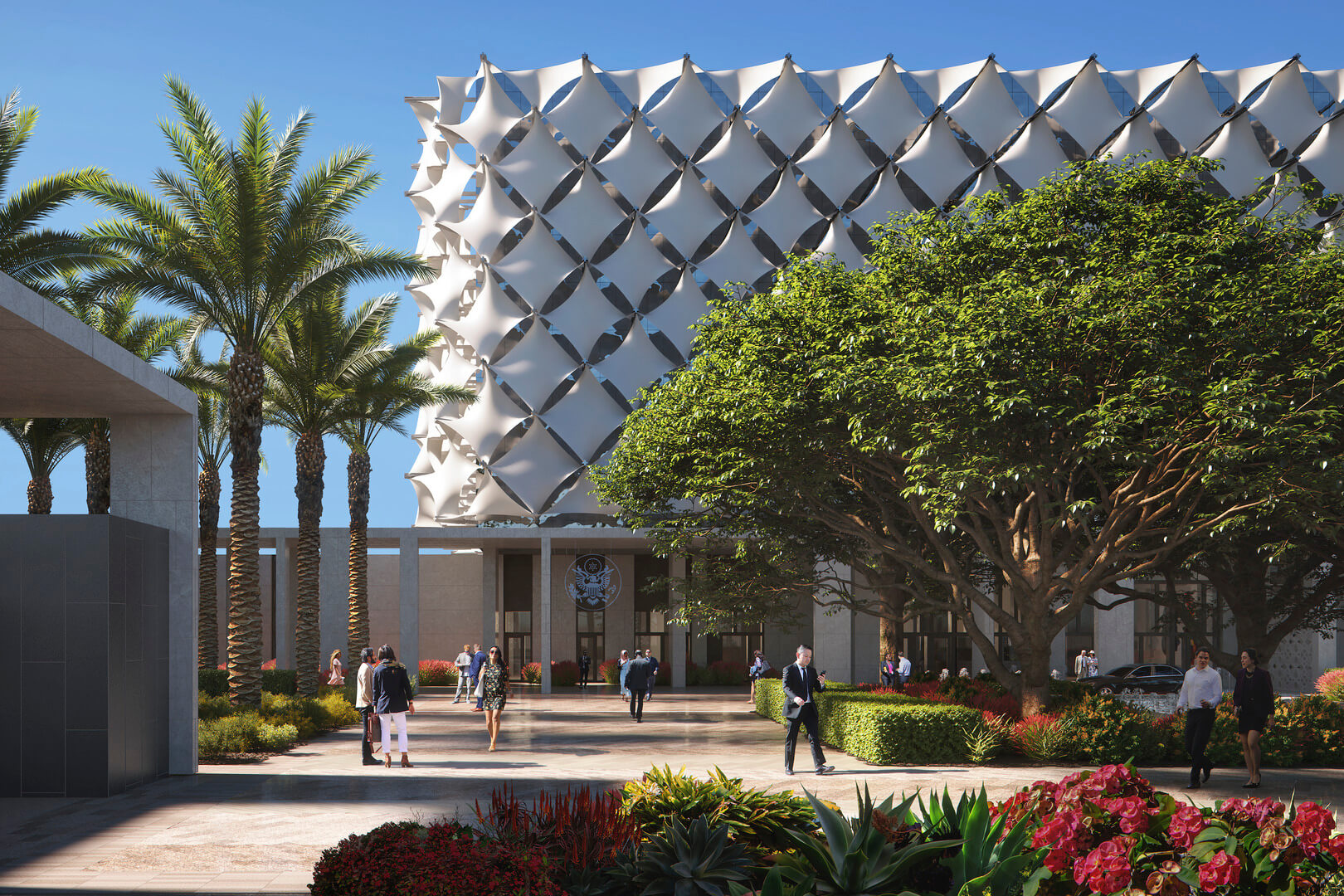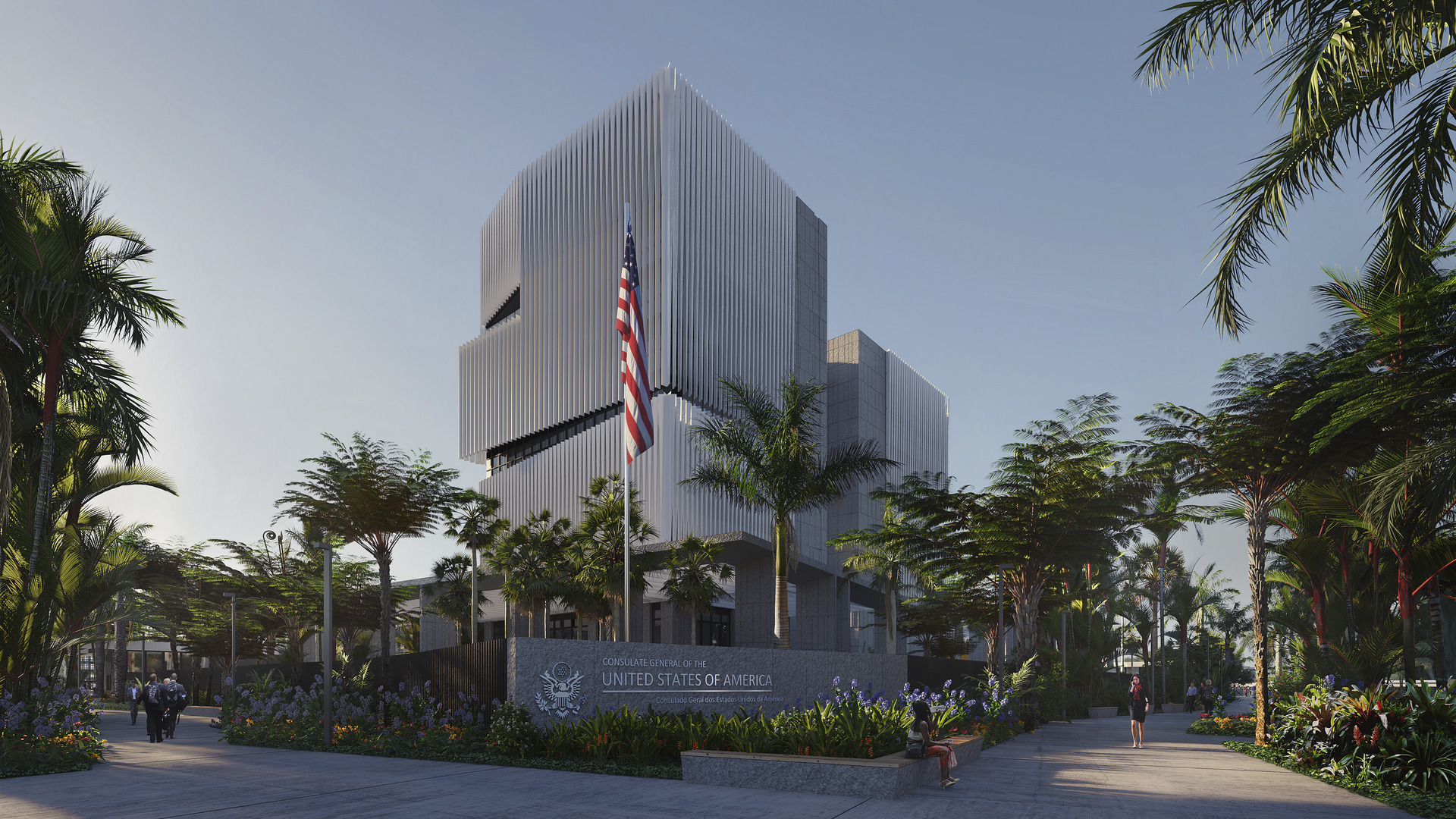
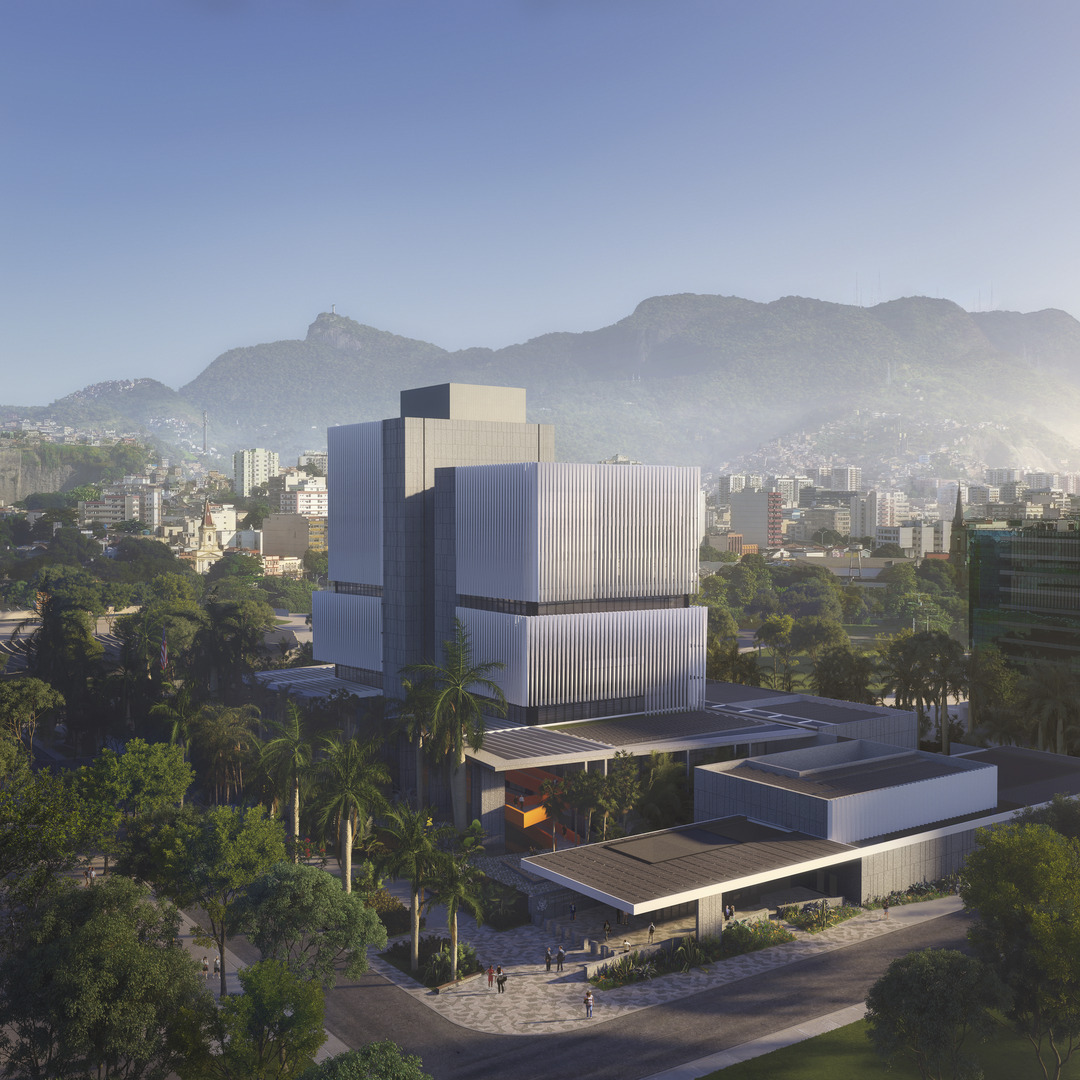
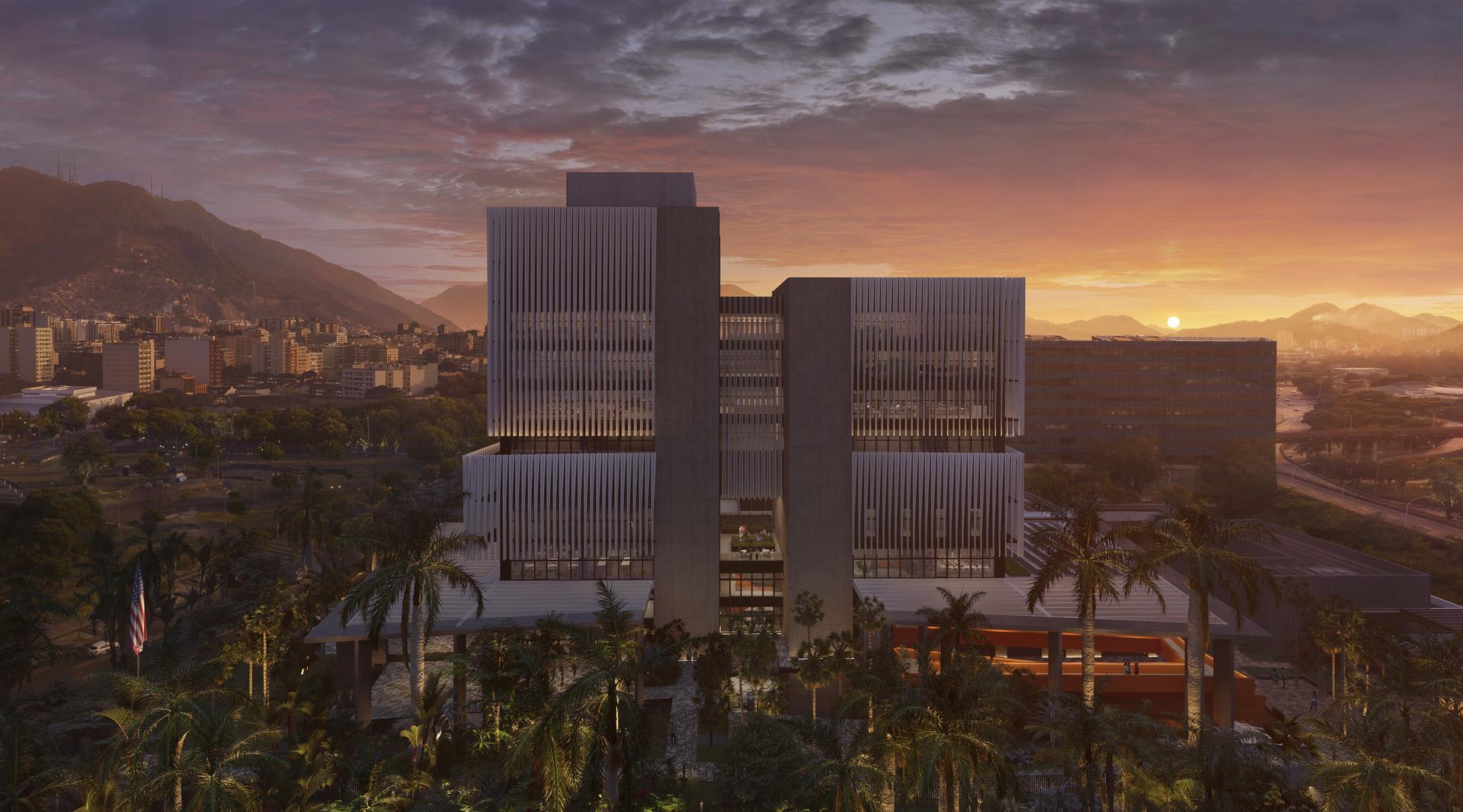
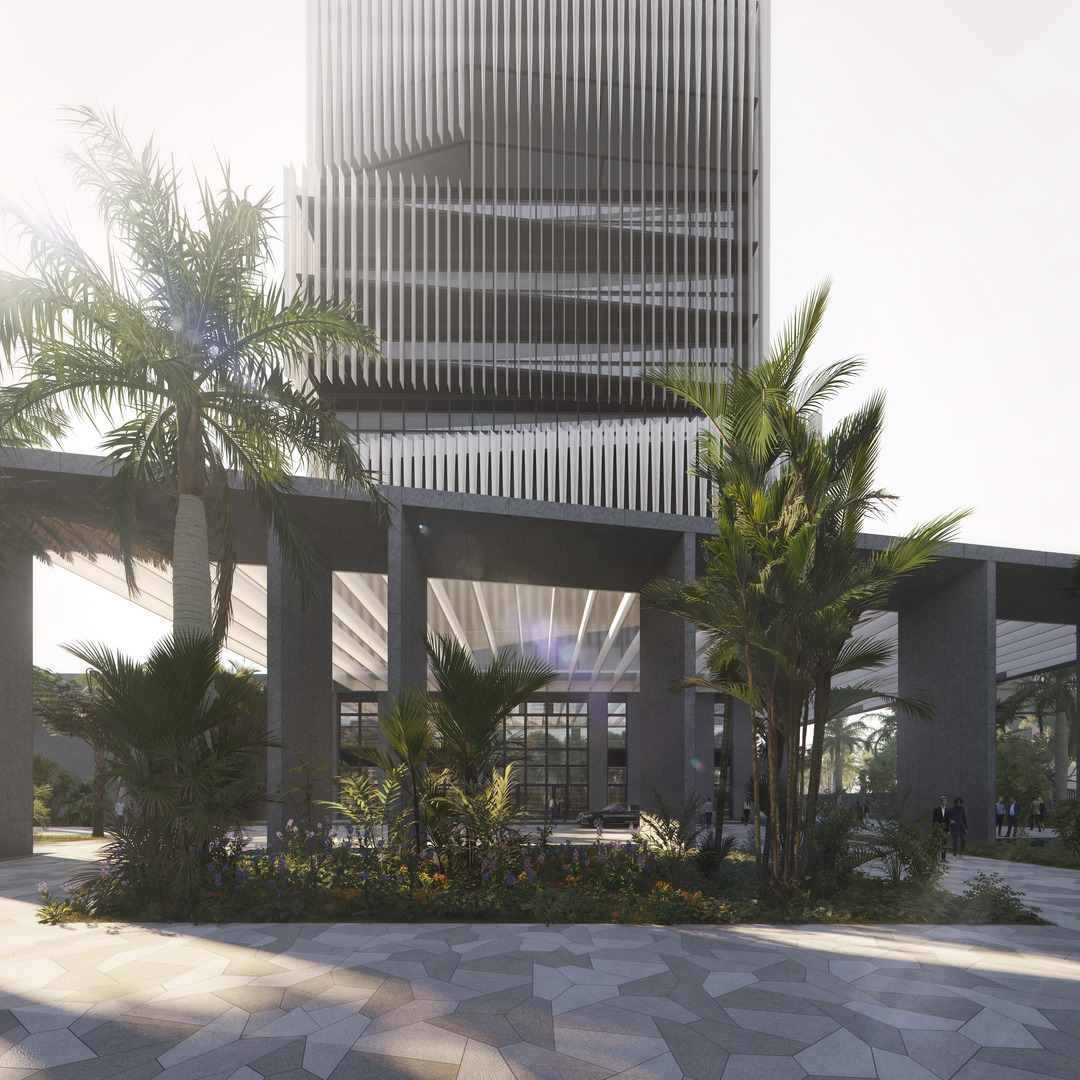
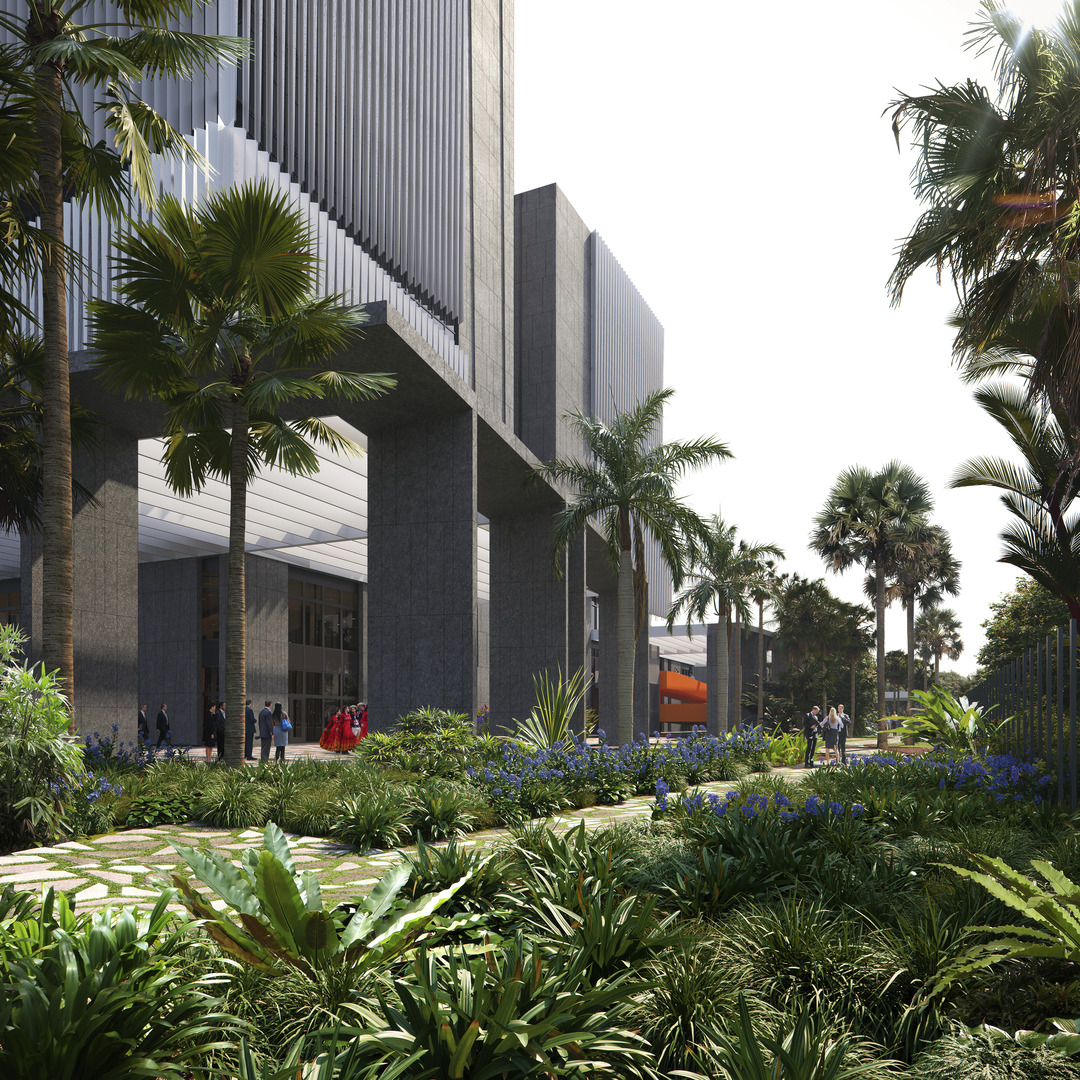
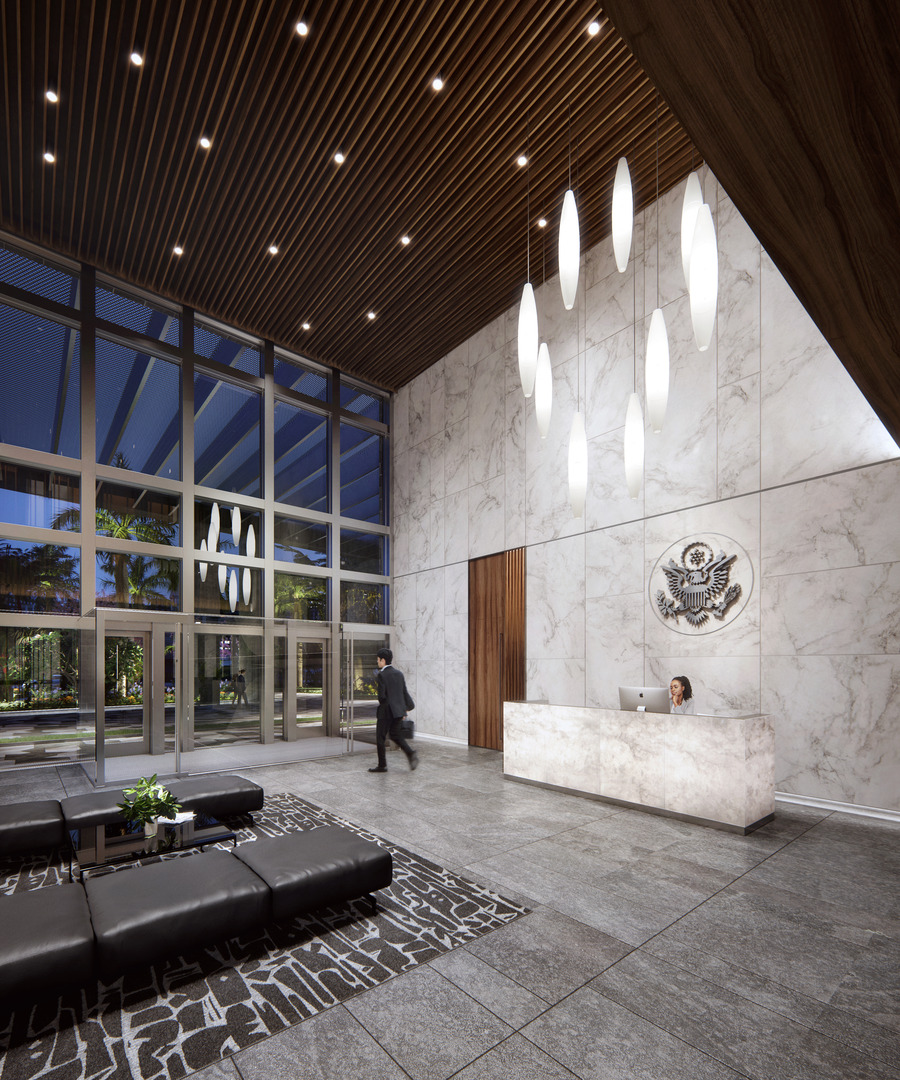
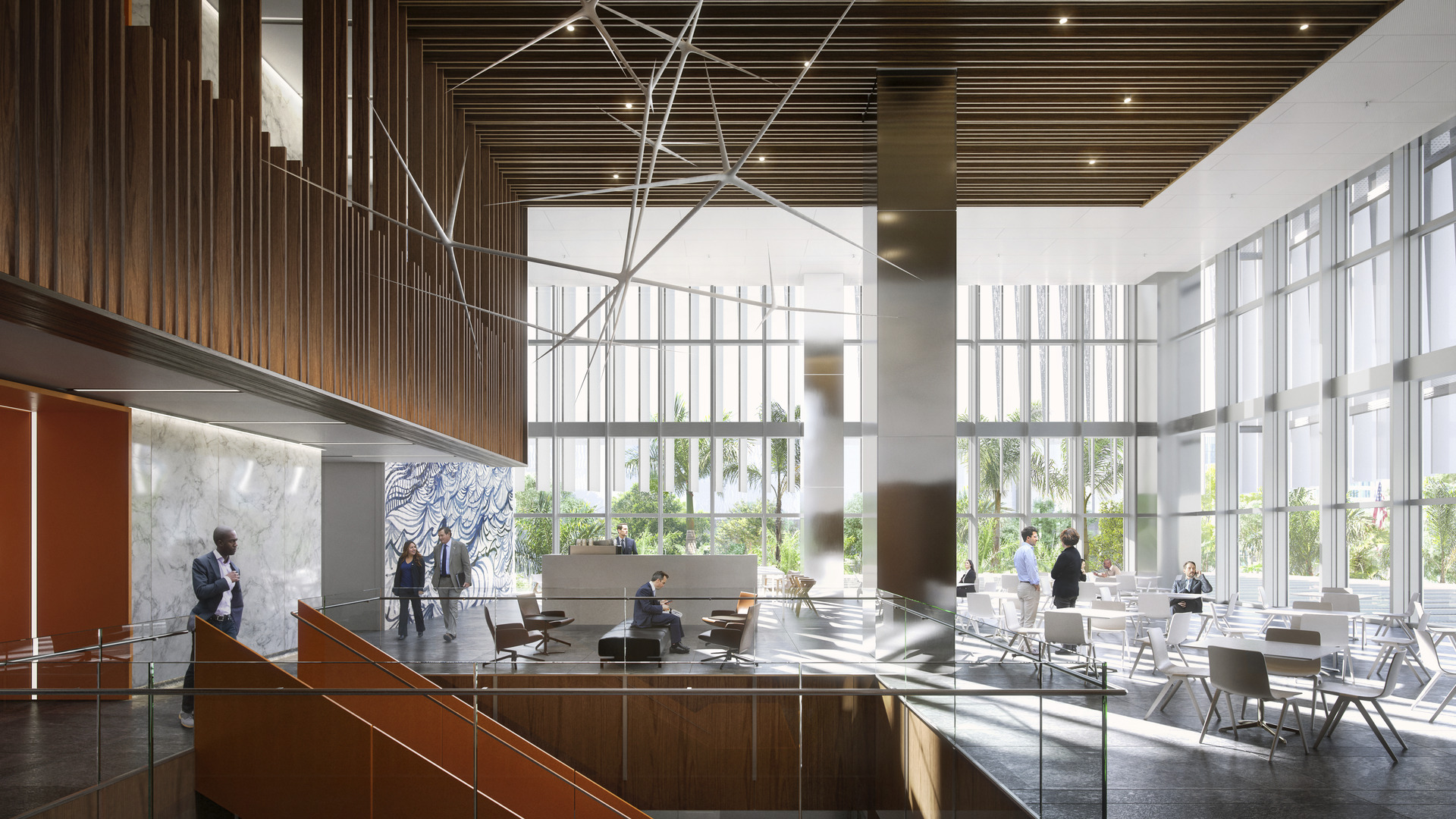
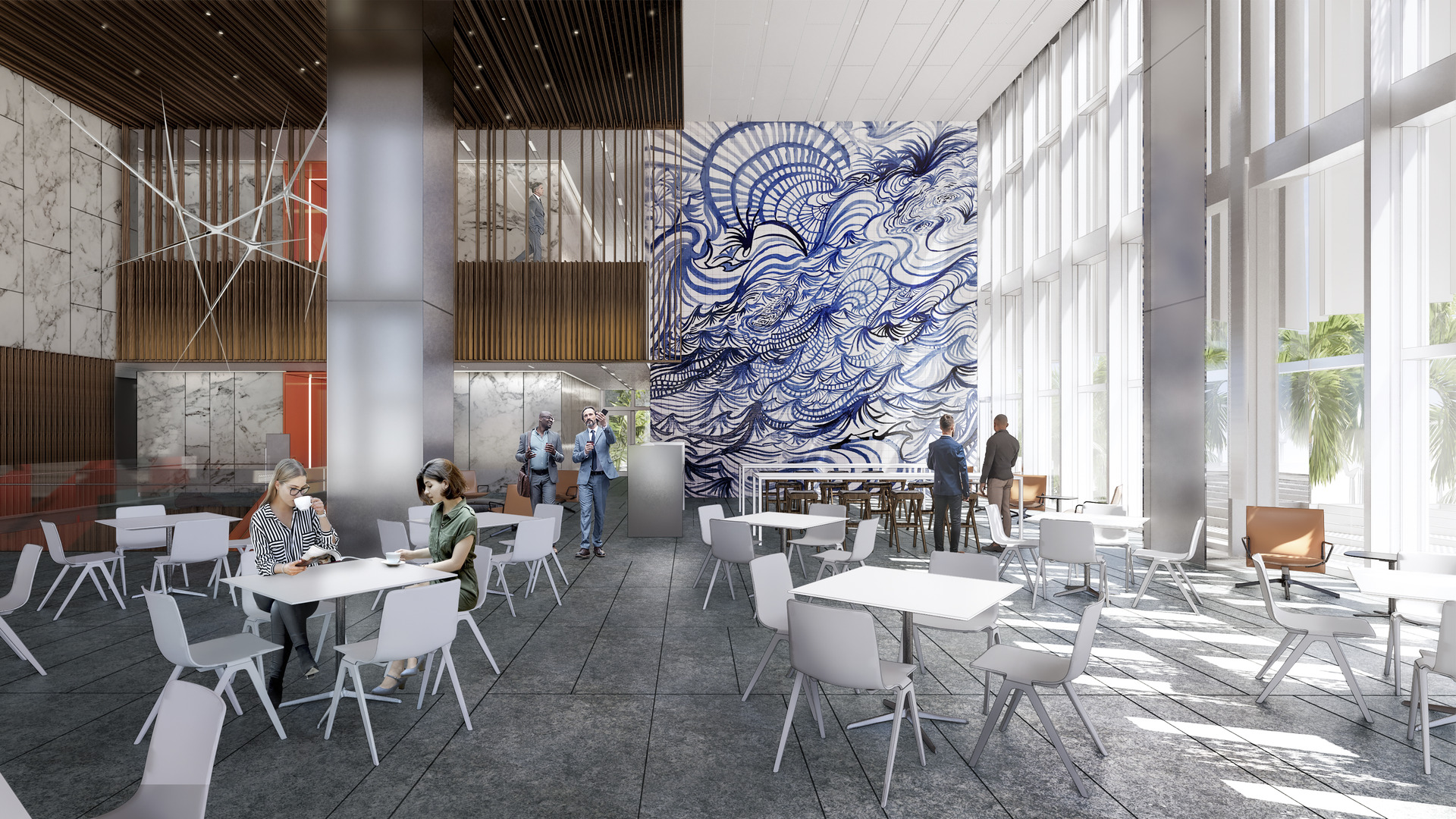
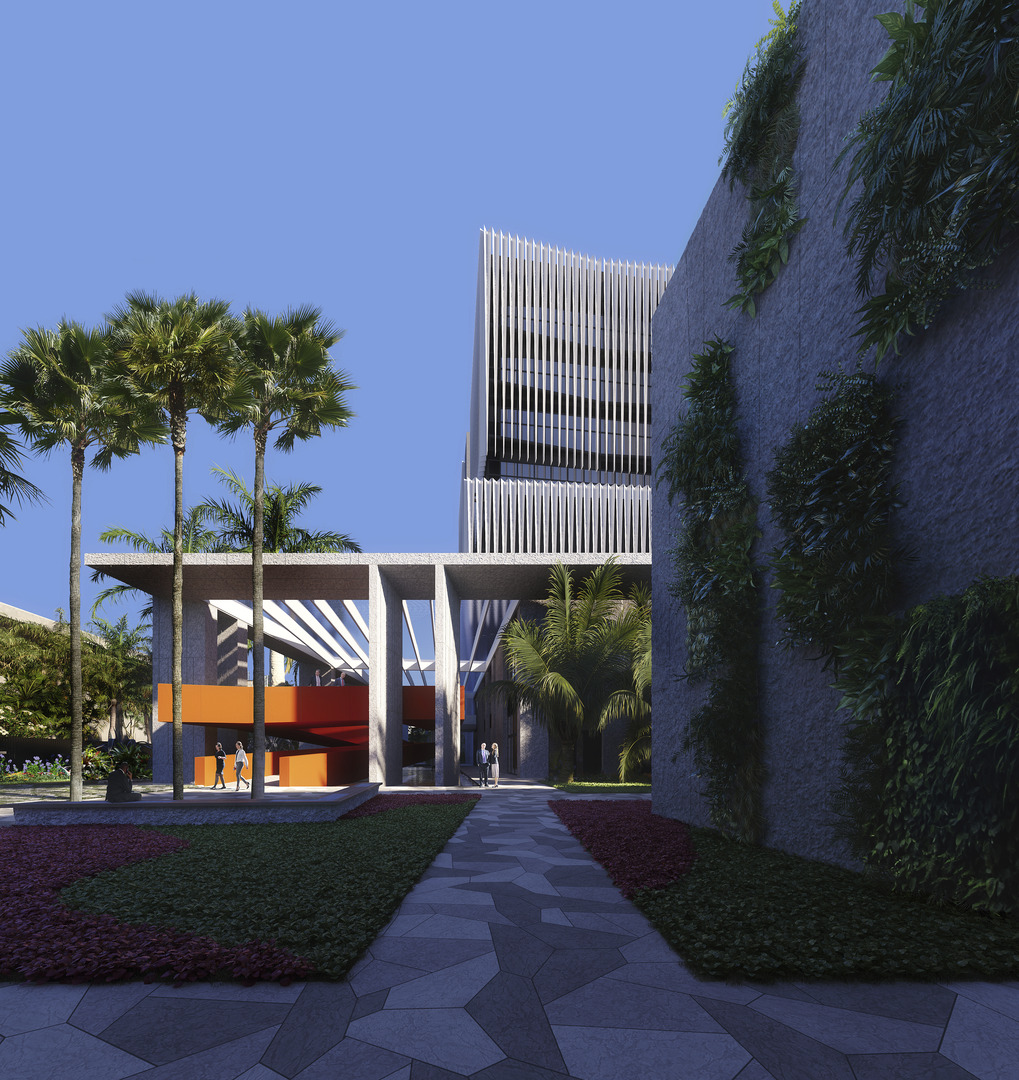
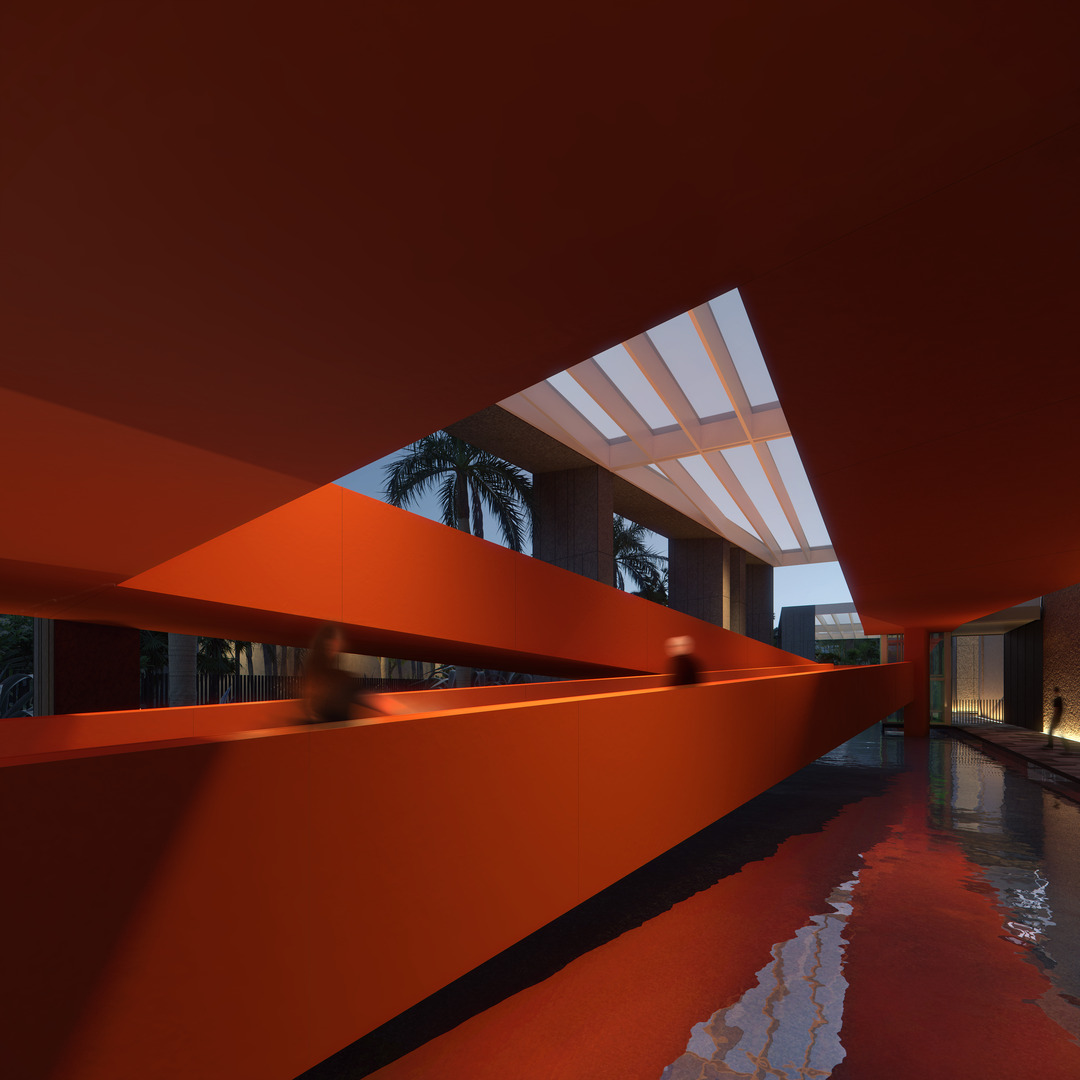
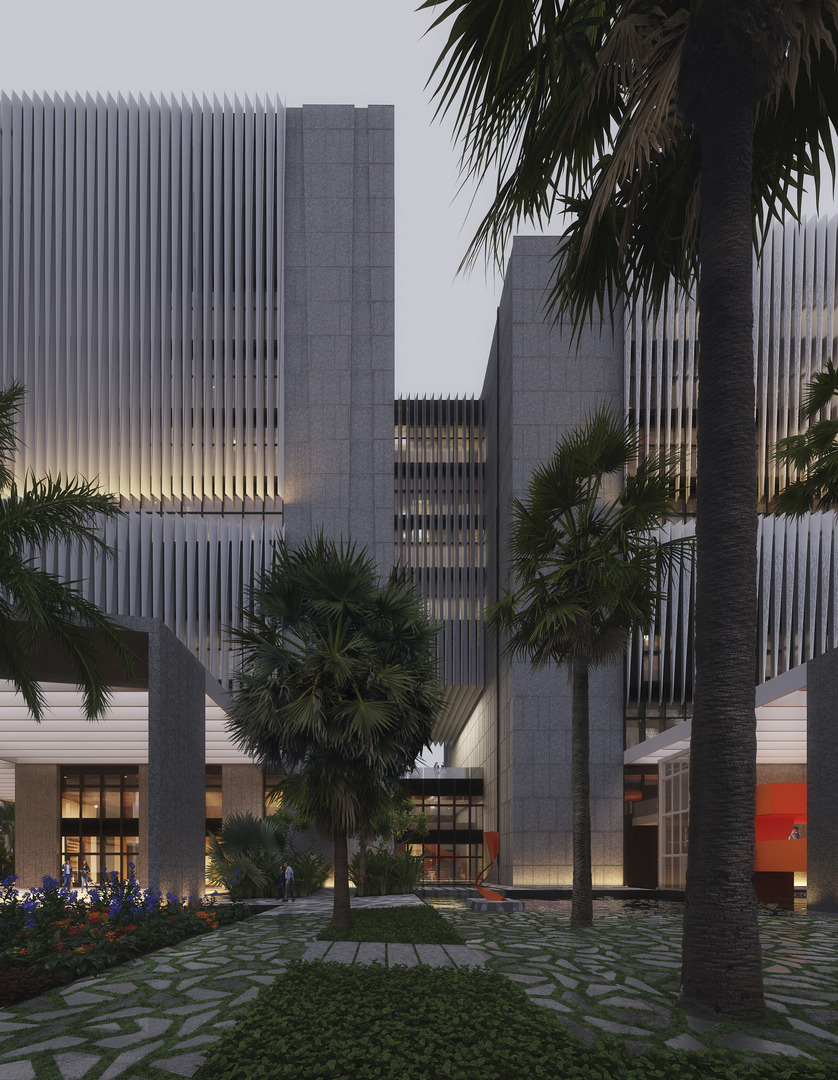
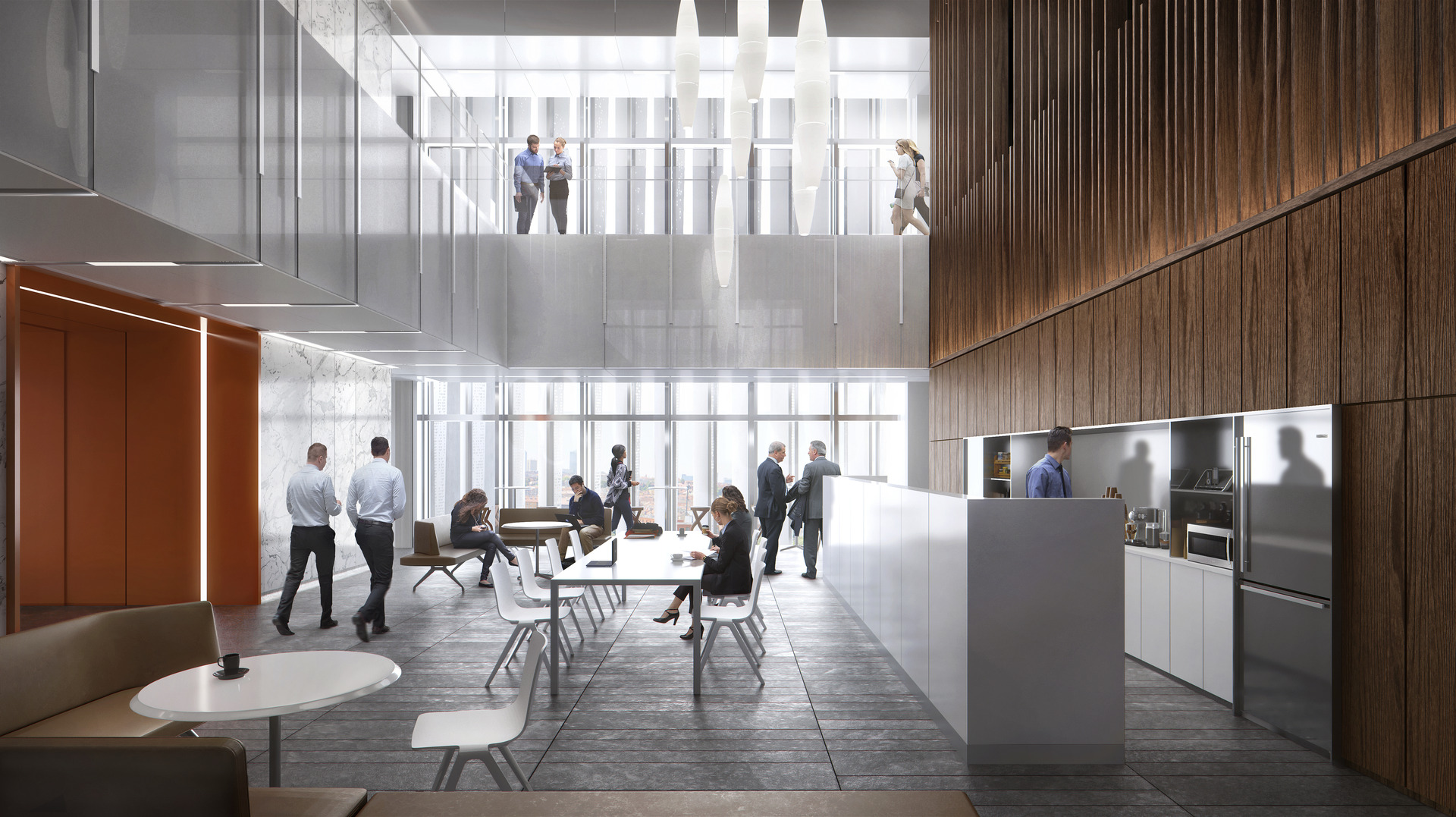
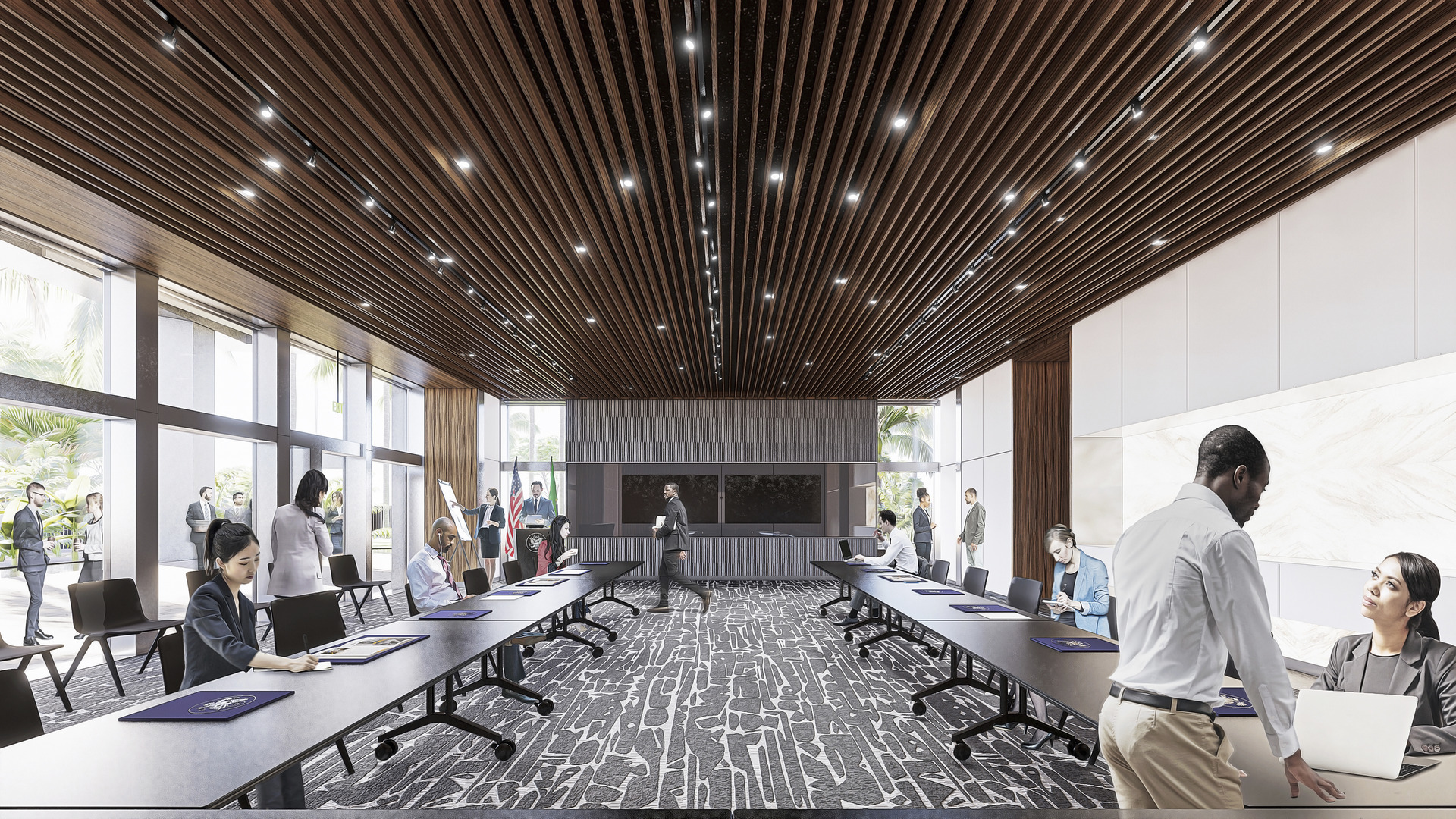
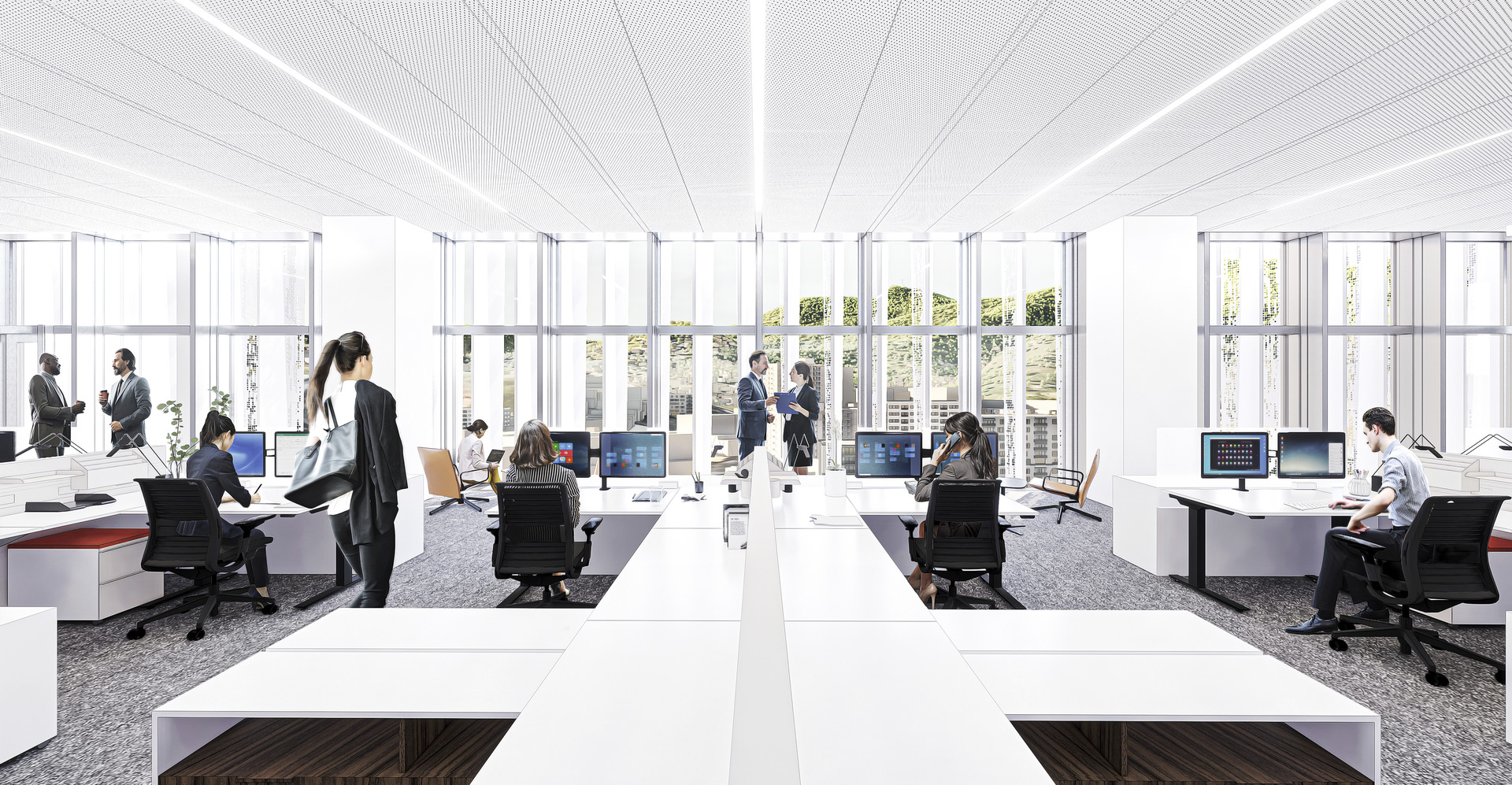
Diplomacy Capturing the Sense of Place
Inspired by modernists traditions in architecture and urban landscape found throughout the vibrant city of Rio de Janeiro, the new Consulate General captures the character of the city through familiar form, materiality, and experience while representing the United States’ diplomatic mission in Brazil with security, stewardship, and resiliency.
The Chancery building is central to the compound on the compact urban site. Entries, exterior event space, gardens, and primary pedestrian circulation activate the east and south frontages and engaging nearby public transportation, plazas, and greenspaces. As a diplomatic gesture to the host city the compound gardens transition across the secure perimeter into the public realm upgrading the city streetscape with a welcoming shaded experience for pedestrians.
Arrival plazas anchor opposite ends of the representational frontage with staff and official visitors entering at the Southwest corner aside the main roadway, and consular visitors gathering at the quieter Northeast corner adjacent to an existing urban park. Photovoltaic canopies identify these public areas providing cover, and visibly promoting commitments to sustainability and resiliency. On compound, monumental trellised ETFE canopies mark the Chancery’s formal entrances providing shade and rain cover. To the south grand plaza spaces that host larger public outreach events are the foreground to the Chancery’s main entrance bounded by formal water features and lush botanical gardens with the lively cityscape beyond. To the north consular visitors ascend a brightly colored processional ramp to a waiting area at the second level. Cantilevered from massive stone piers the ramp meanders above an extensive reflecting pool while overlooking the compound gardens.
The 11 story Chancery is portrayed as two office towers, differing in height, set atop a common 2 story plinth of public access and service functions. Separated by an outdoor terrace at their base, the towers are bridged at the upper levels by double height communal “hubs” with staff amenities. The tower cores are clad with locally quarried stone reflecting the geology of the surrounding mountains. In contrast office and common spaces are fully glazed capturing daylight and iconic views. To balance openness with energy efficiency and workplace comfort, arrays of custom formed, vertical shade fins overlay the tower facades. The fins unify and shape each tower with a series of angular gestures, combining a unique identity with effective solar control attenuated to each exposure.
Rainwater collection and storage from the main roof areas is orchestrated through a network of water gardens, basins, and underground cisterns. Integral to the landscape experience, the water features also responsibly manage stormwater on site to minimize the impact on the municipal stormwater system. Stored rainwater is reused for landscape irrigation and cooling tower make up.
The architectural form of the two towers connected by a common link is inspired from the land forms of Sugarloaf Mountain and Morro da Urca at the mouth of Guanabara Bay in Rio de Janeiro, Brazil which are connected and communicate via cable car. This typology is reinterpreted as two structural towers of varying height set atop a plinth and connected at the upper levels via a common glass connector. The site design reflects entanglement of the urban fabric with the surrounding tropical landscape through a series interconnected garden space and water features that surround and interact with the architecture.
Design Architect: Richärd Kennedy Architects
Associate Architect: HGA
Client: U.S. Department of State Bureau of Overseas Building Operations
Size: 182,211 SF
Project Type: Civic + Public
Services: Architecture, Interior Design
Delivery Method: Design Bid Build
General Contractor:
MEP Engineer: ARUP
Structural Engineer: ARUP
Landscape Design Architecture: OLIN
Certification: LEED Silver
2023 – Architectural Products, "The Consulate Architect", Volume 21, January/February 2023, p. 36
2022 – The Chicago Athenaeum, American Architecture Award, Honorable Mention
The architectural form of the two towers connected by a common link is inspired from the land forms of Sugarloaf Mountain and Morro da Urca at the mouth of Guanabara Bay in Rio de Janeiro, Brazil which are connected and communicate via cable car. This typology is reinterpreted as two structural towers of varying height set atop a plinth and connected at the upper levels via a common glass connector. The site design reflects entanglement of the urban fabric with the surrounding tropical landscape through a series interconnected garden space and water features that surround and interact with the architecture.
